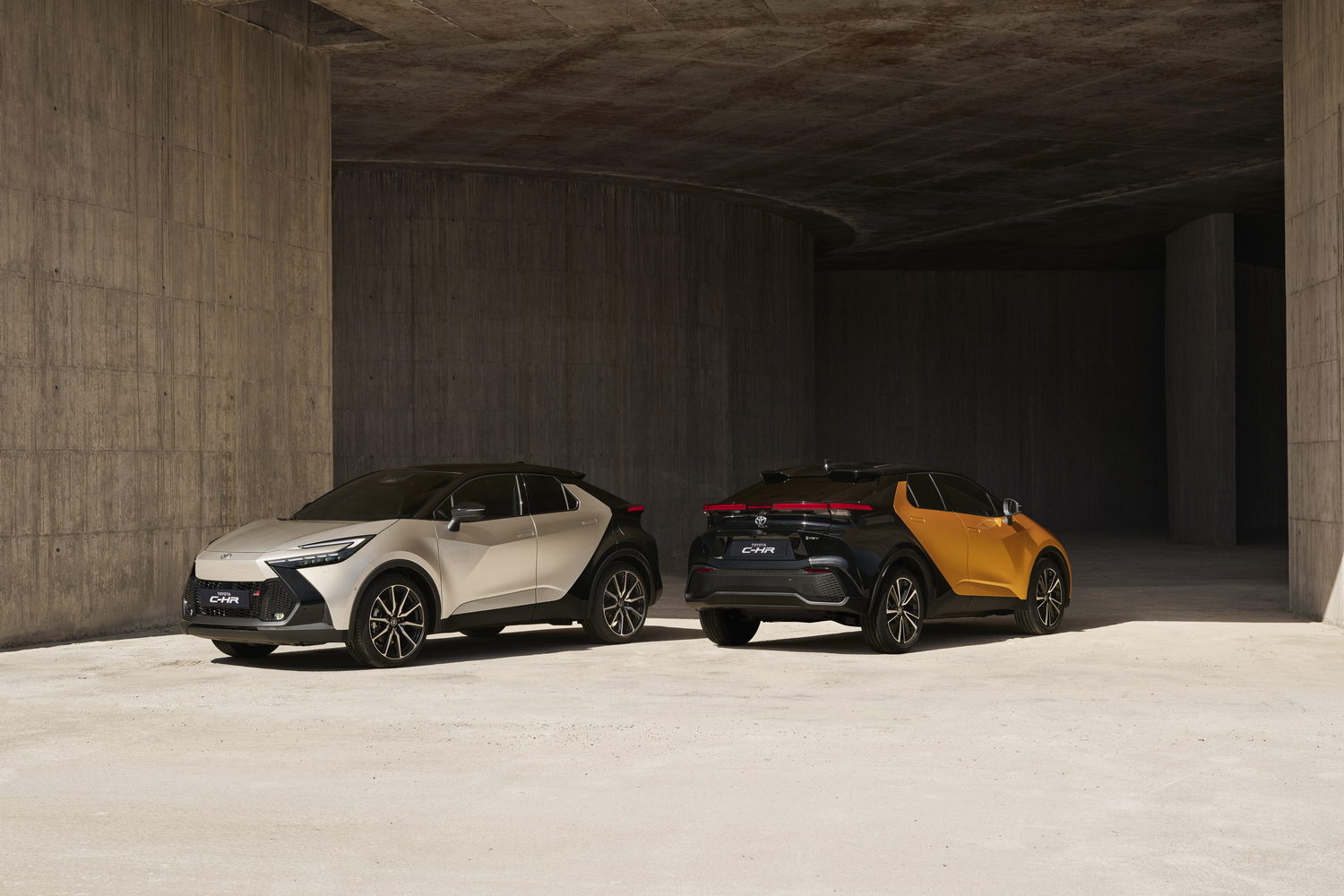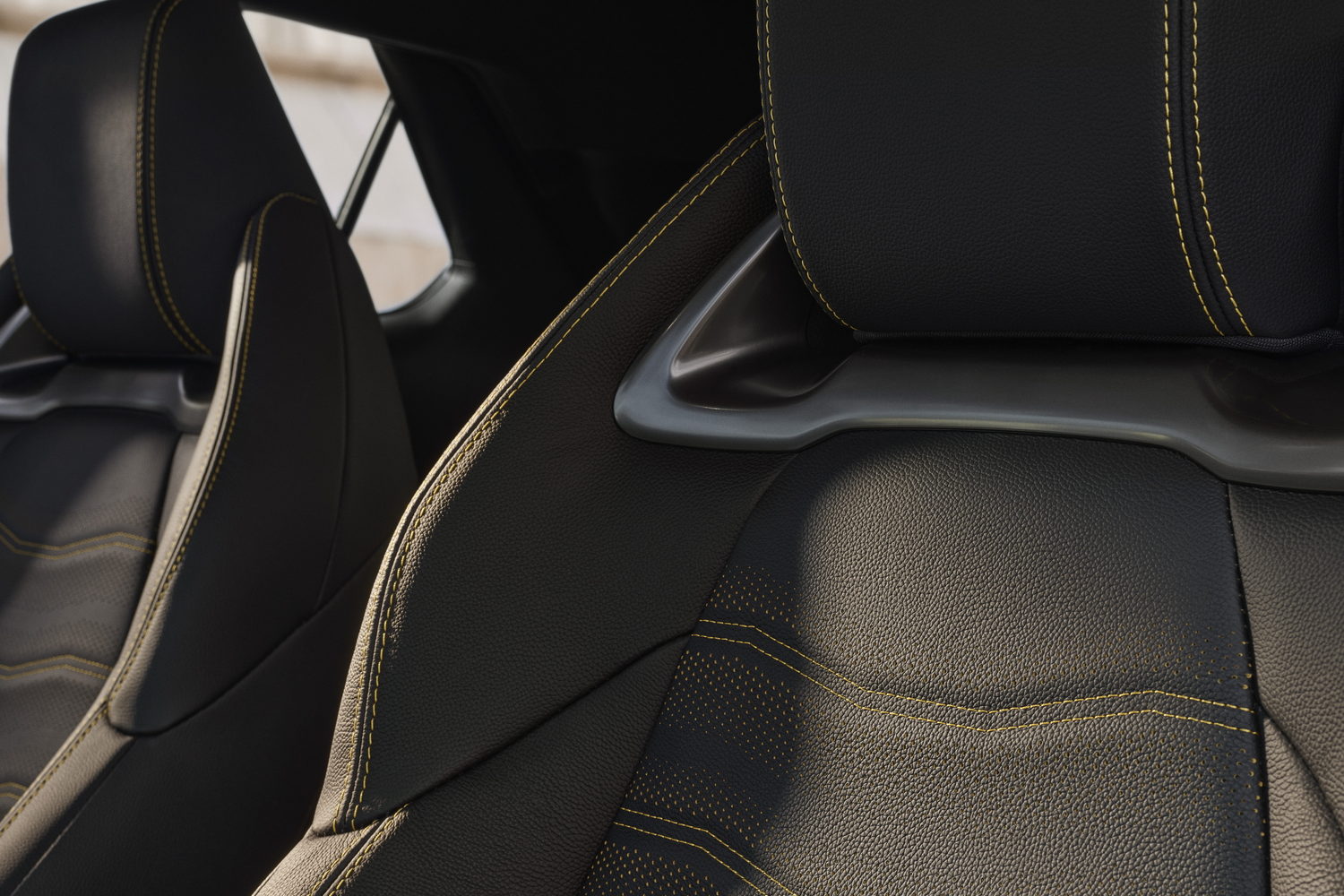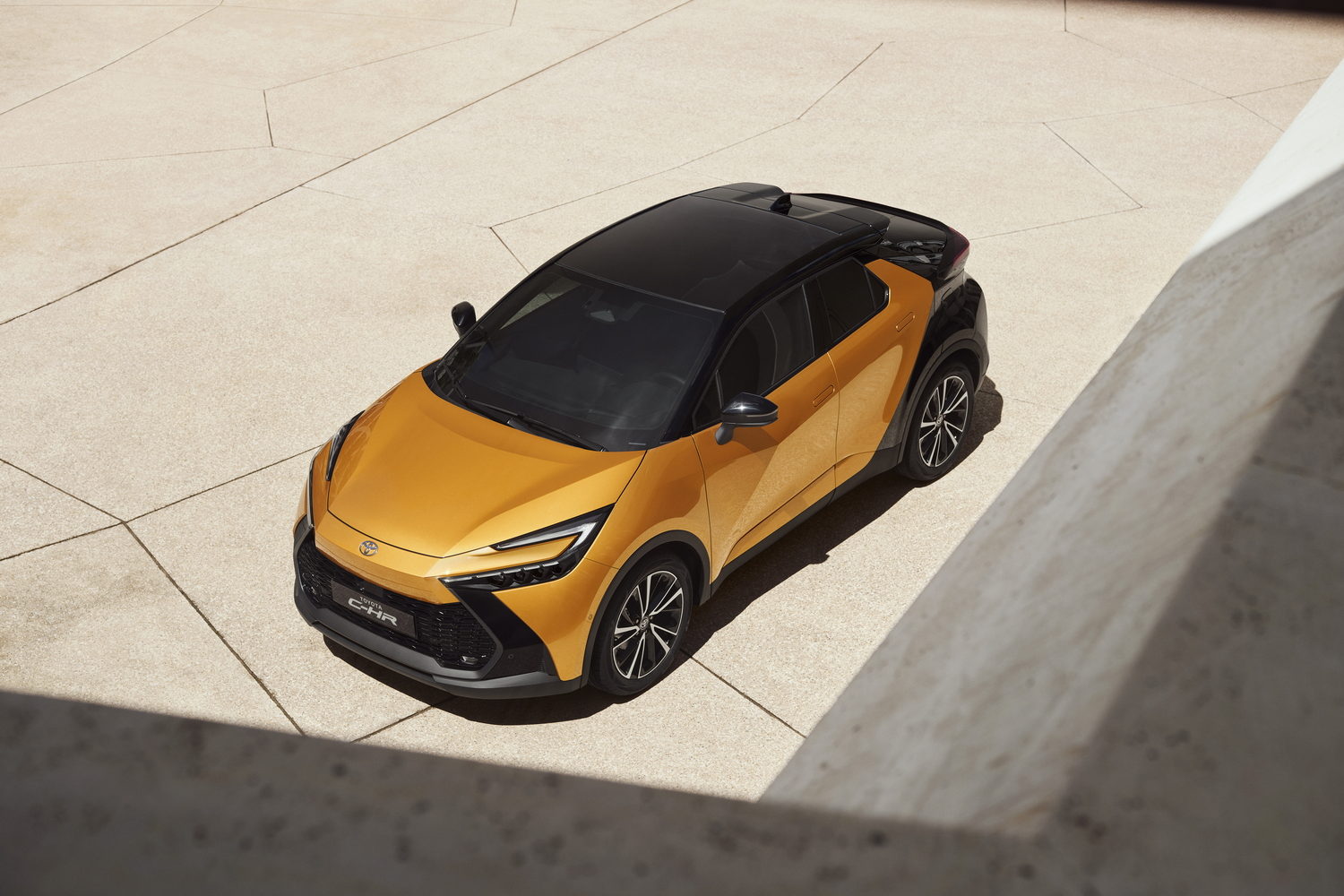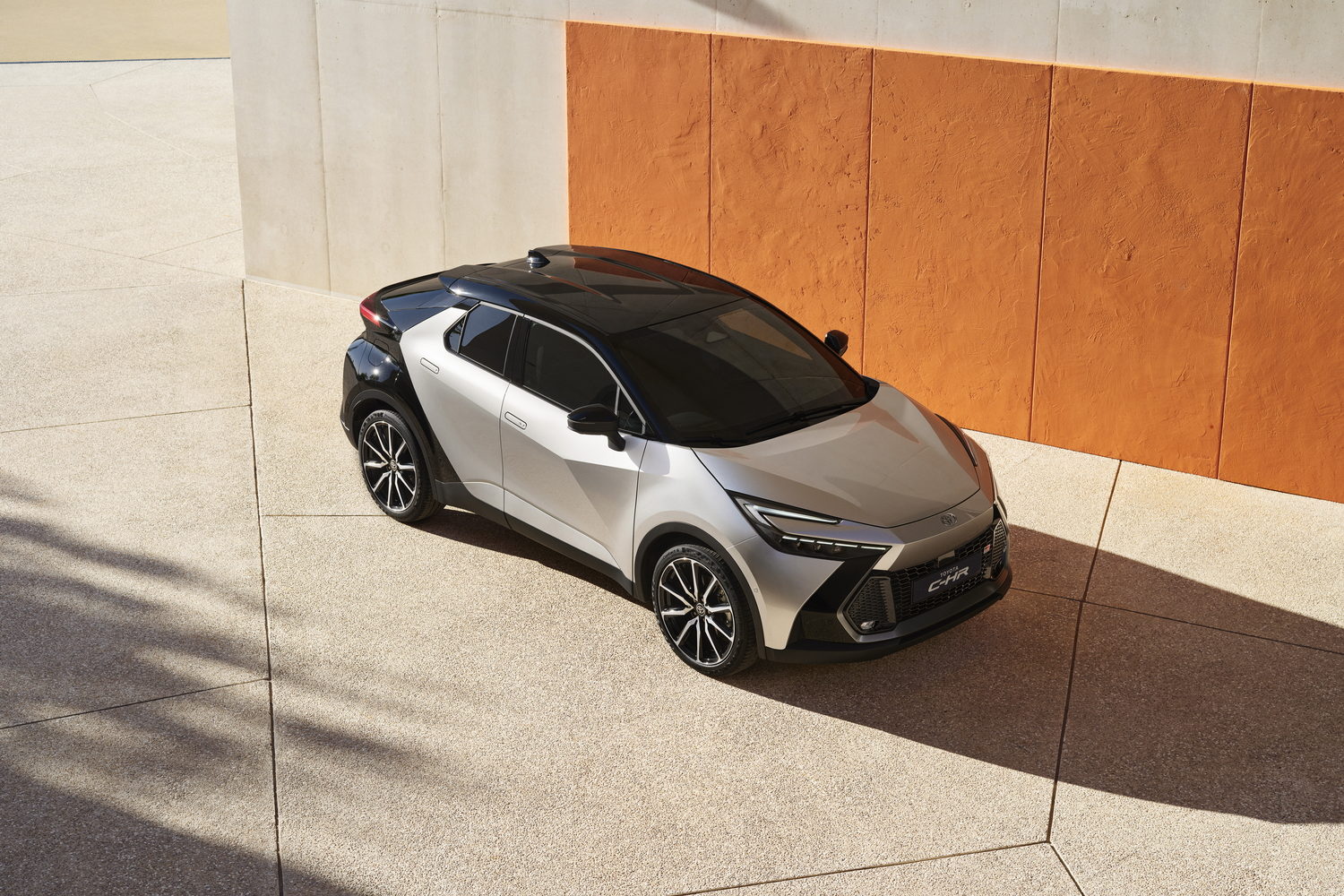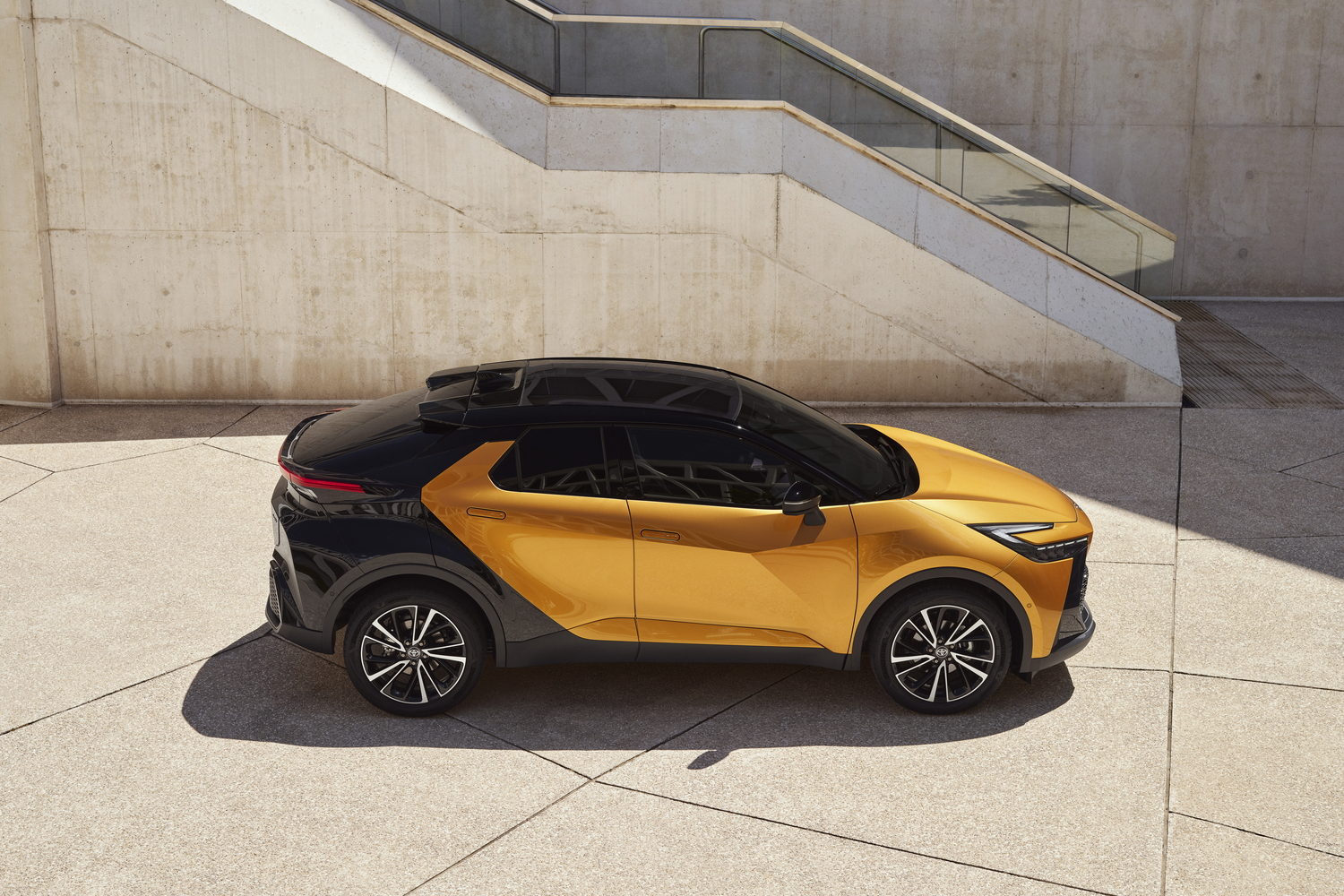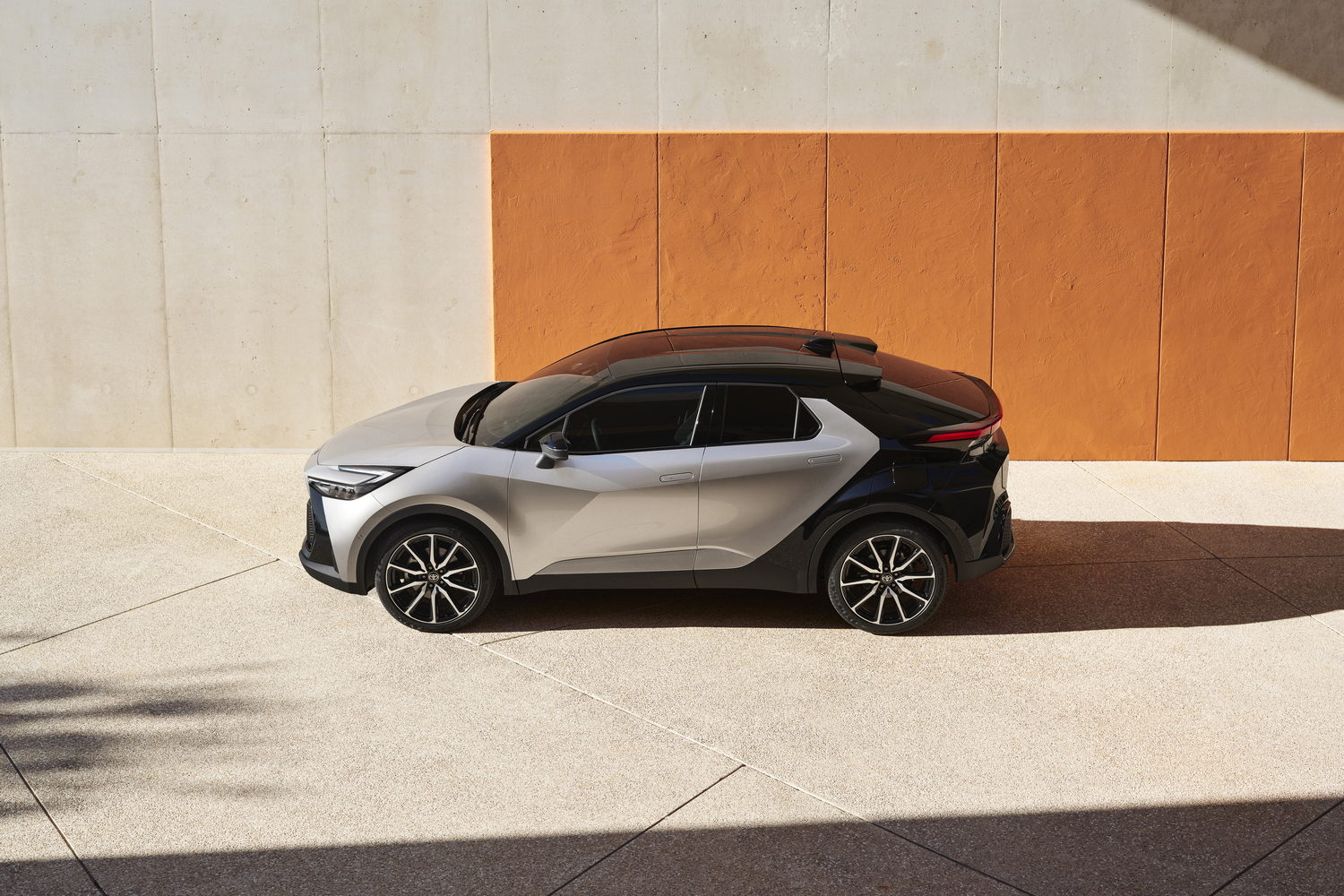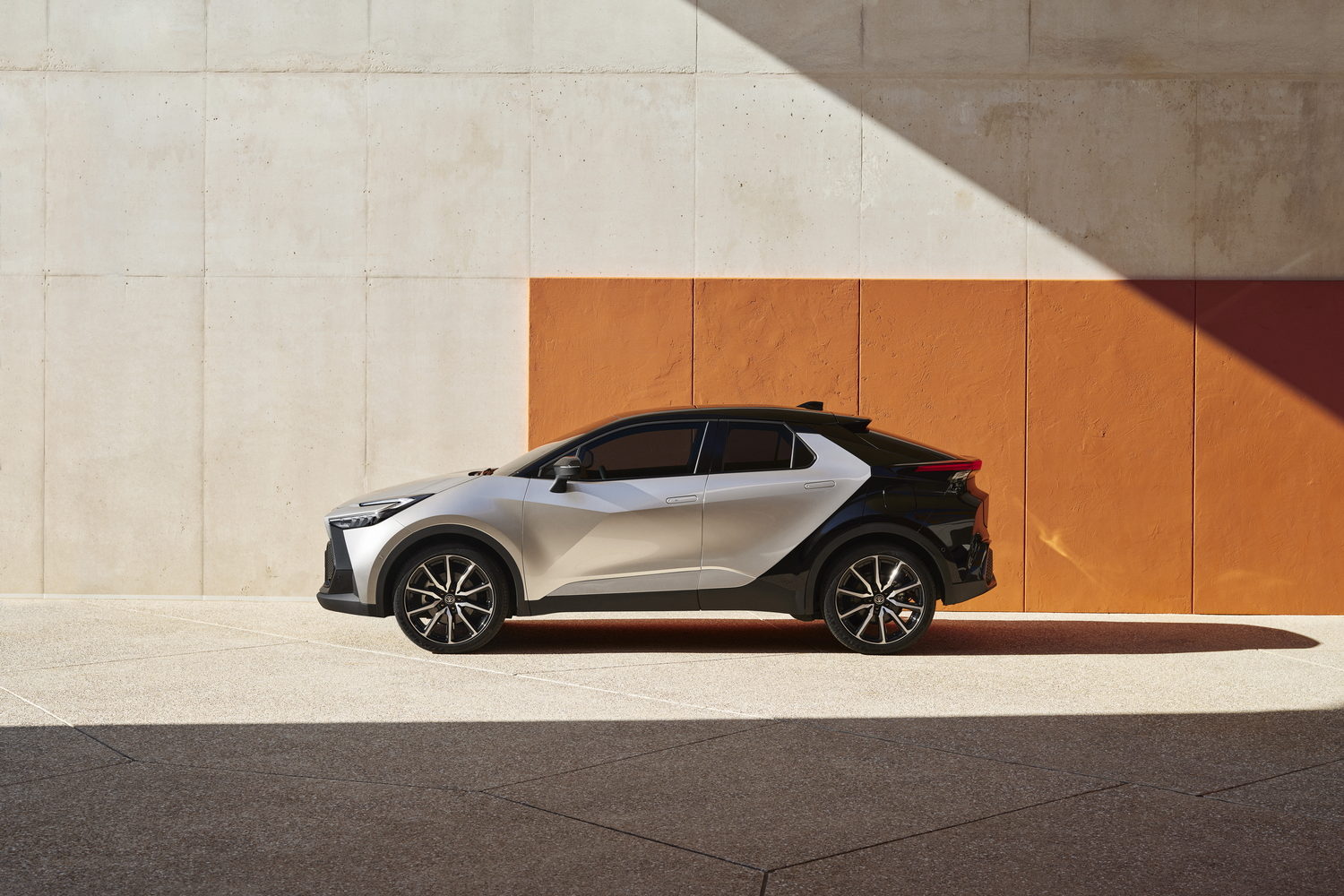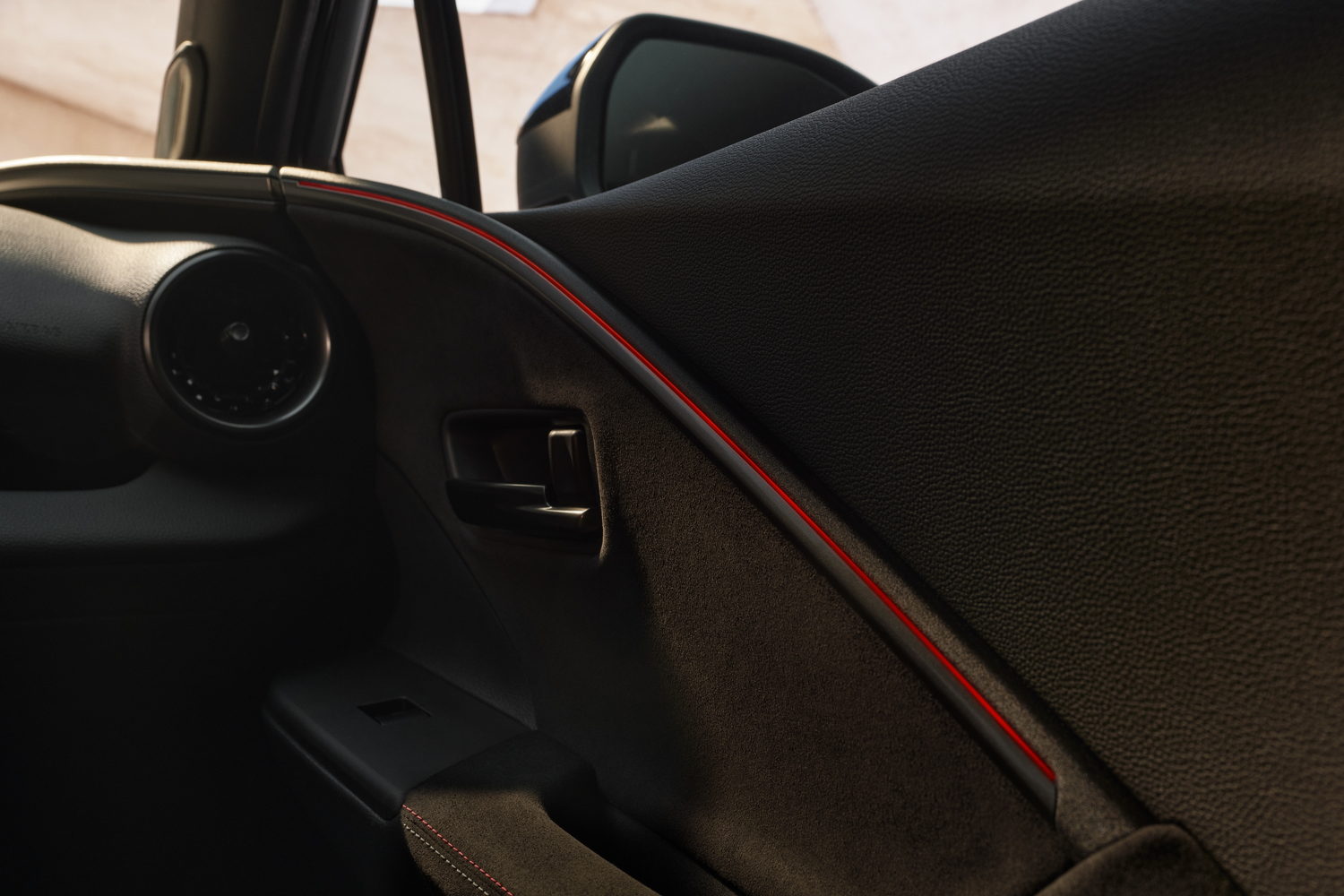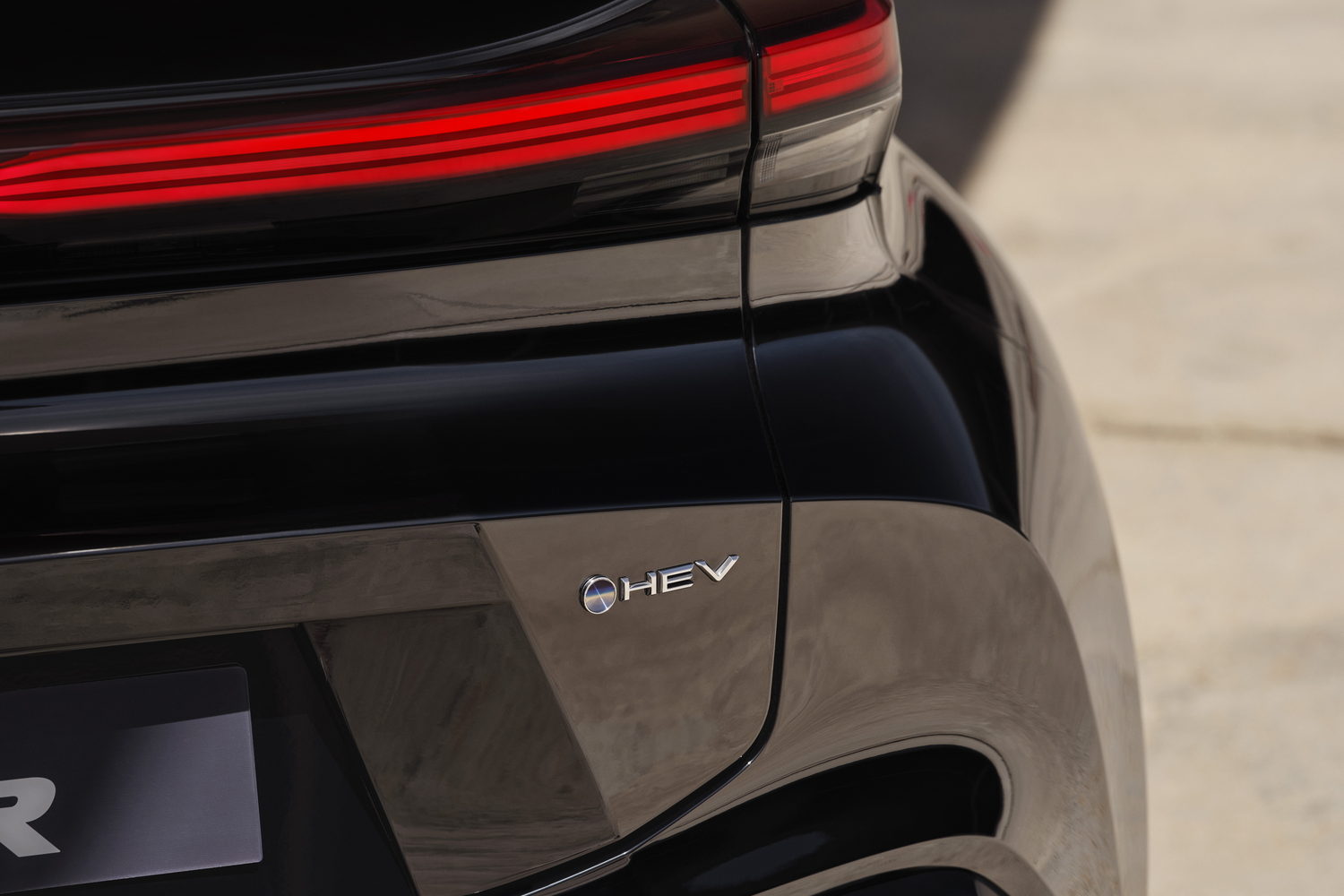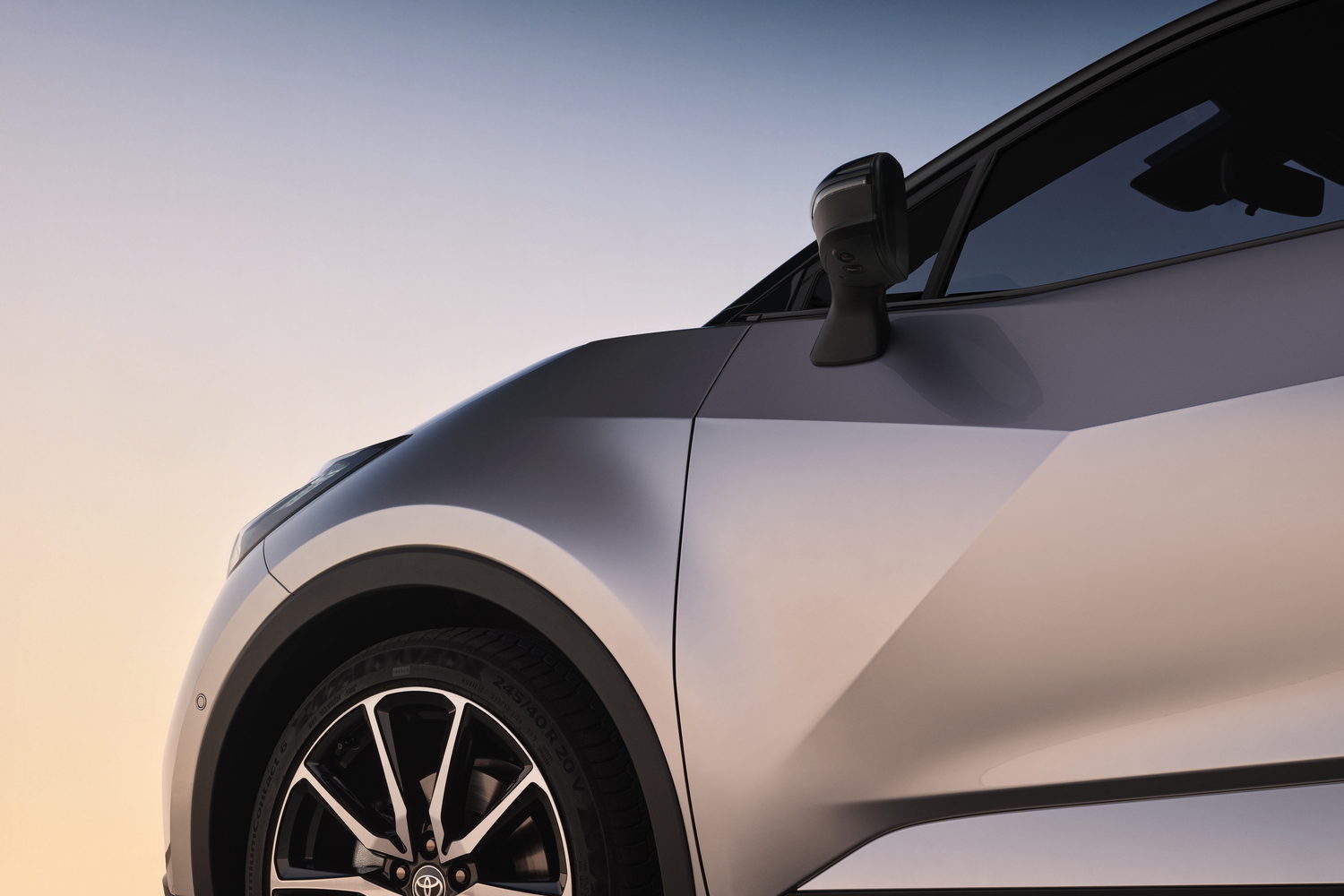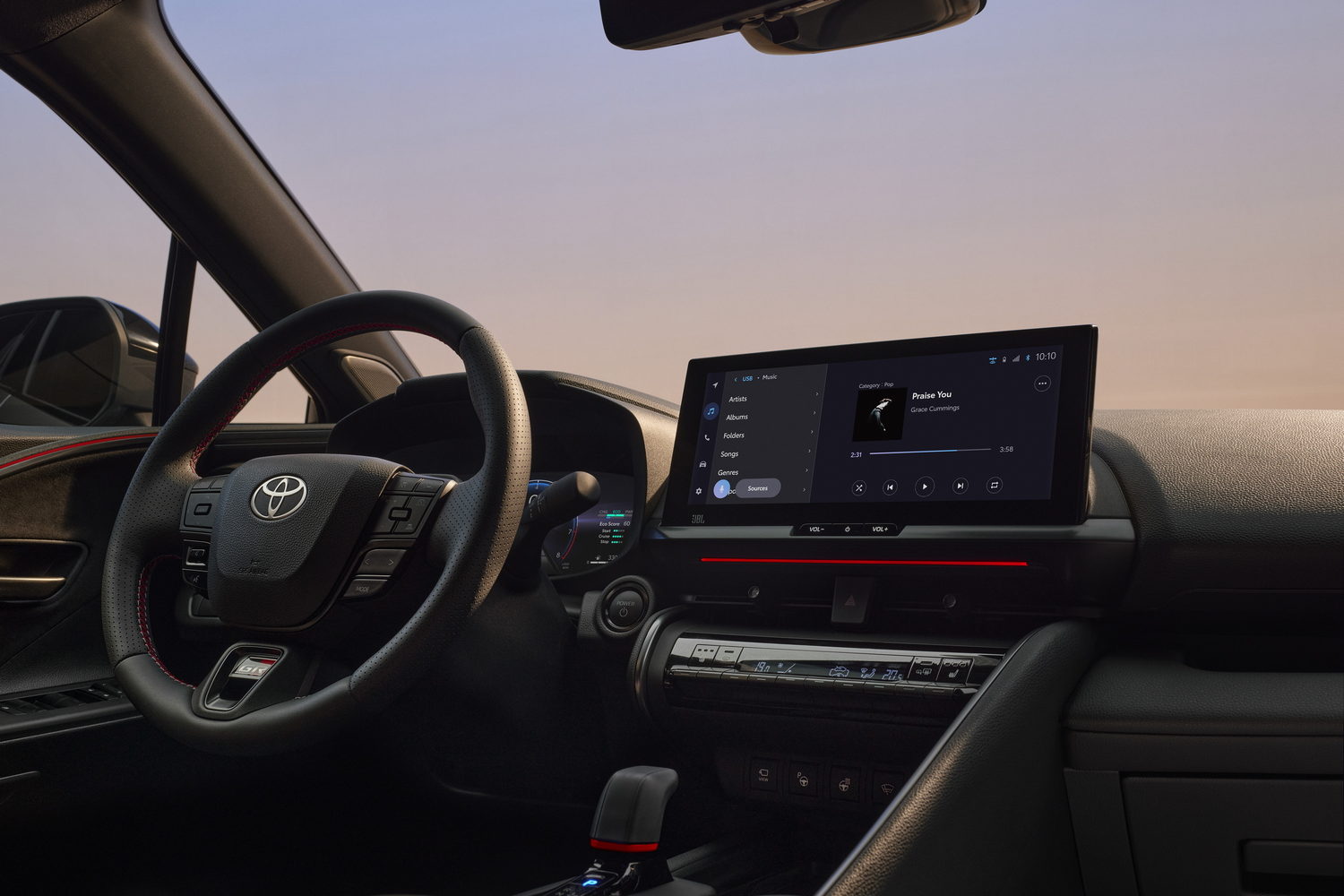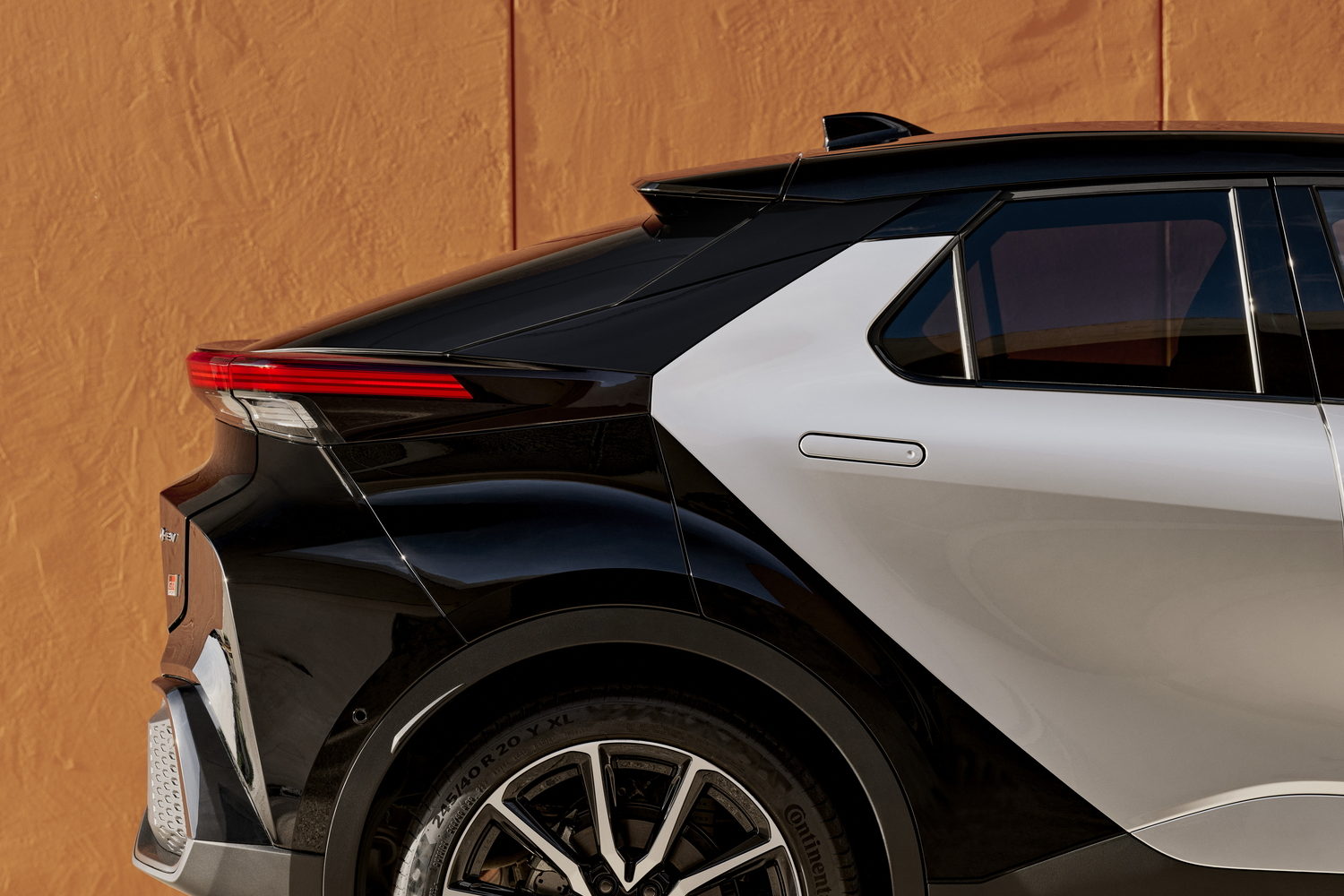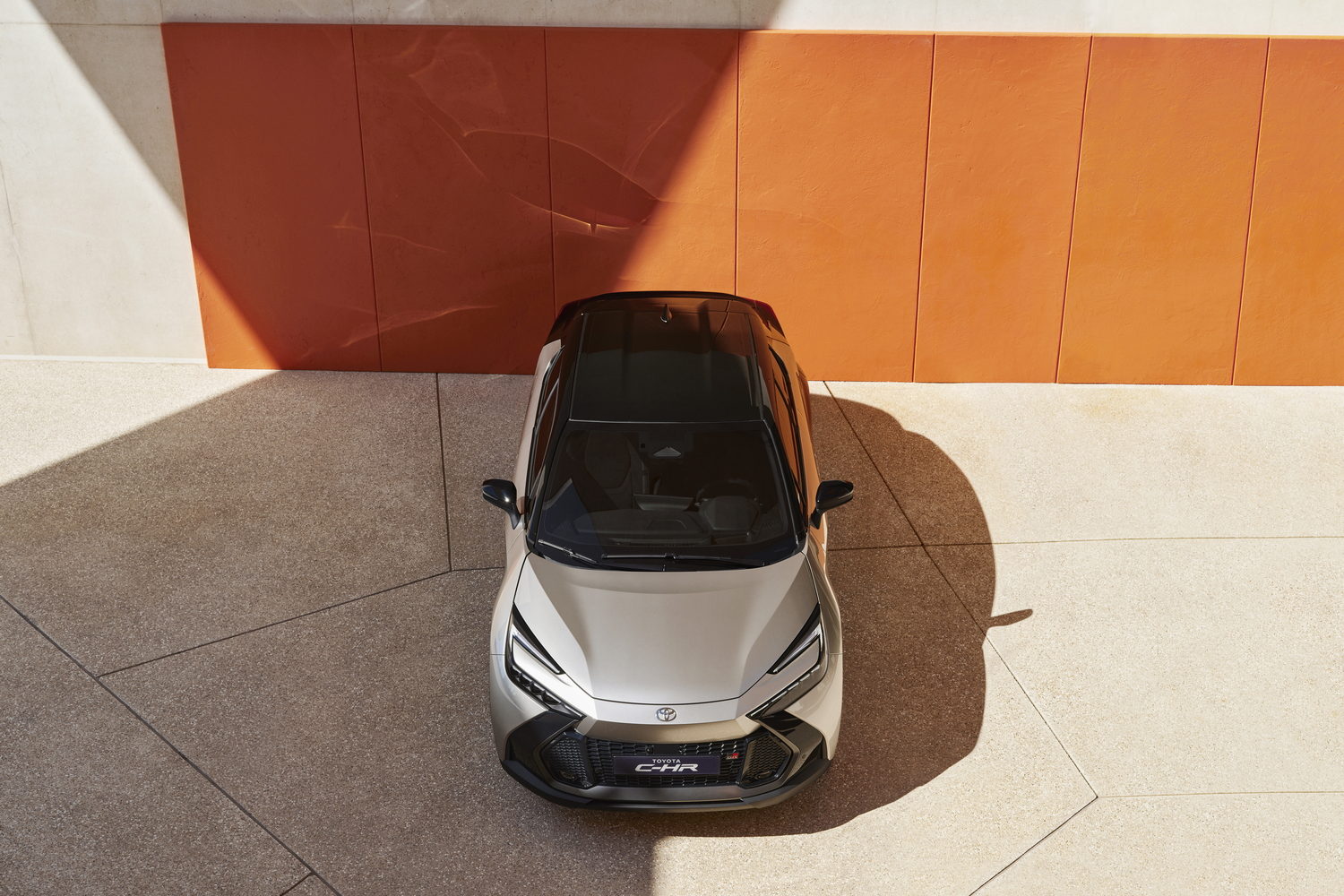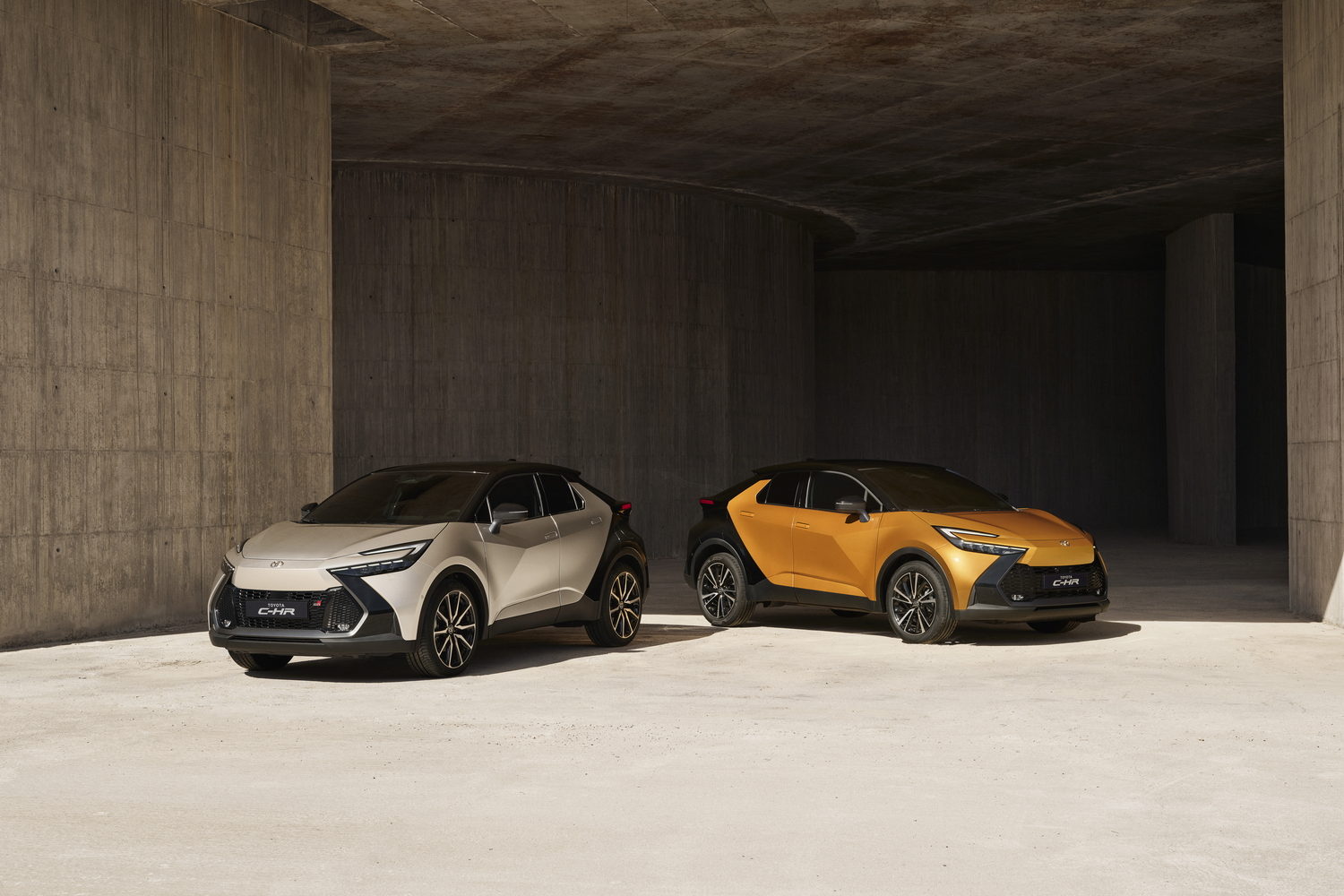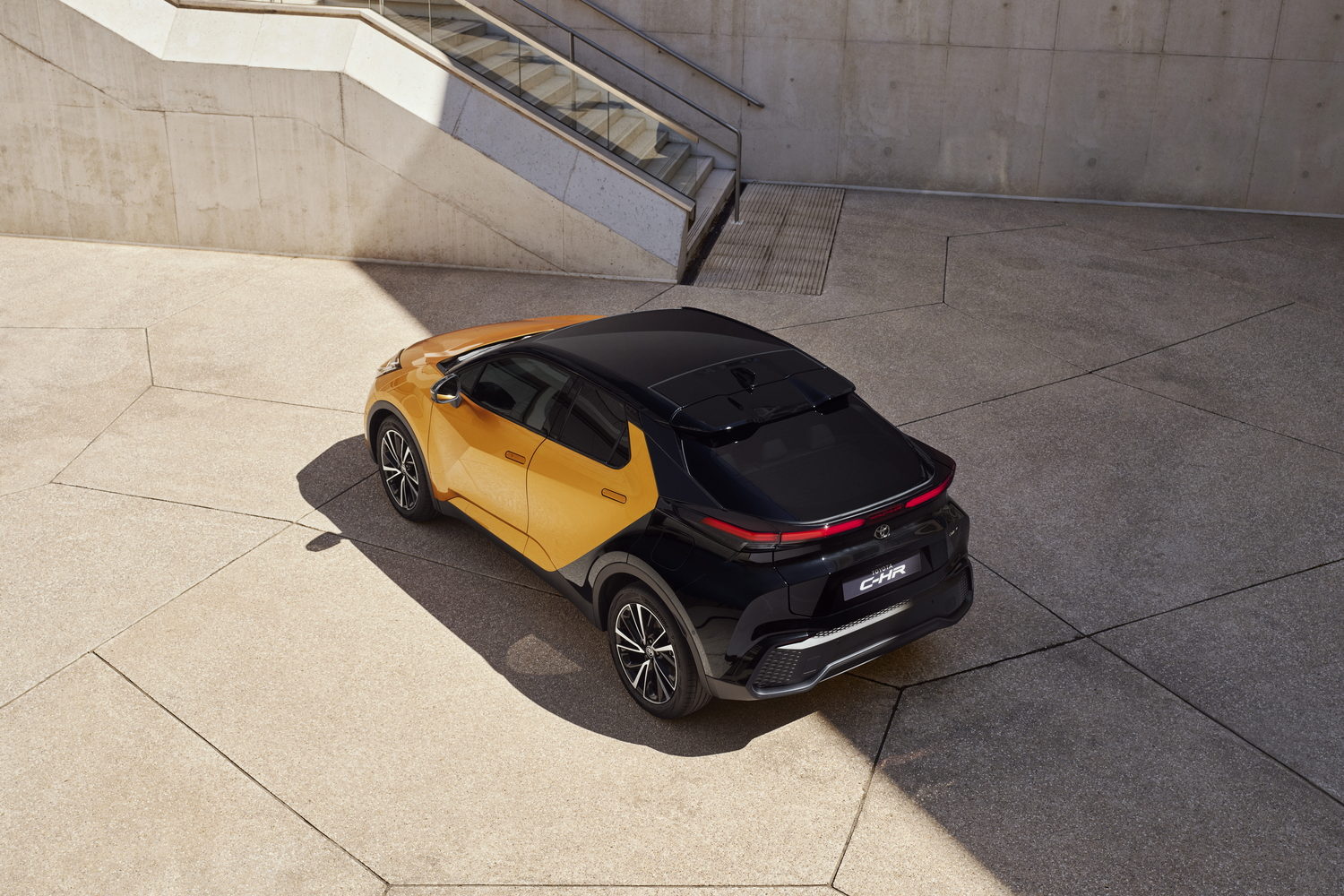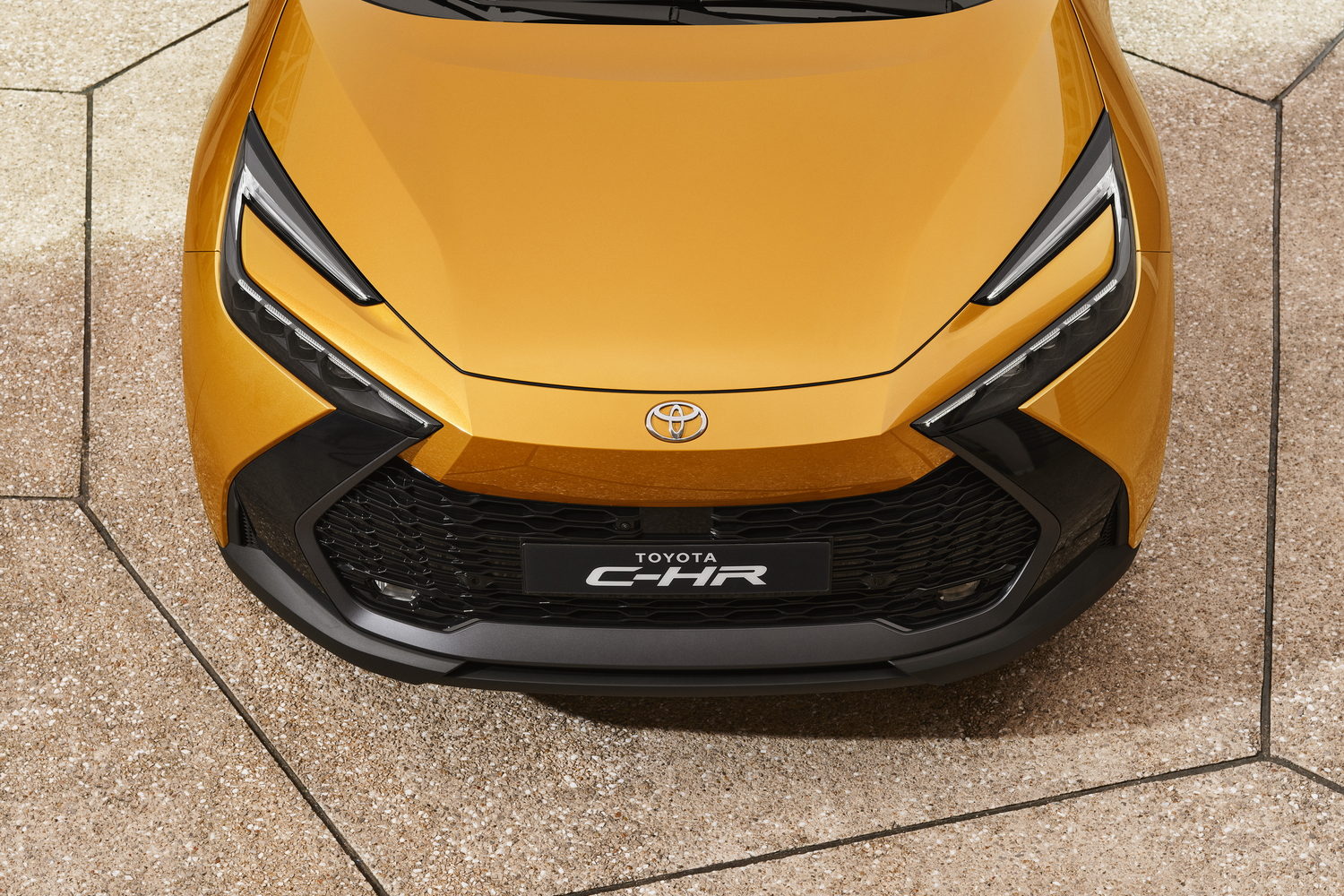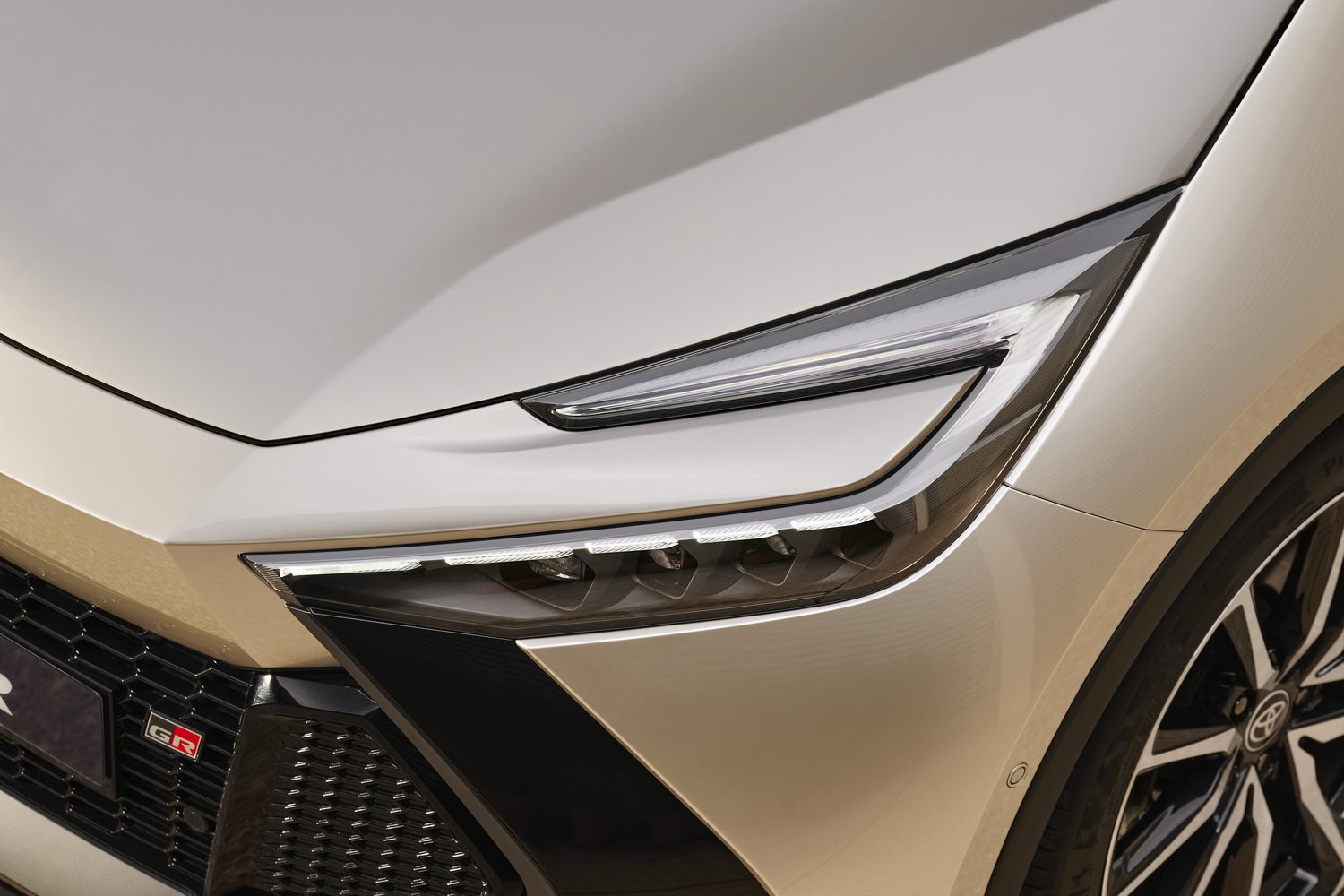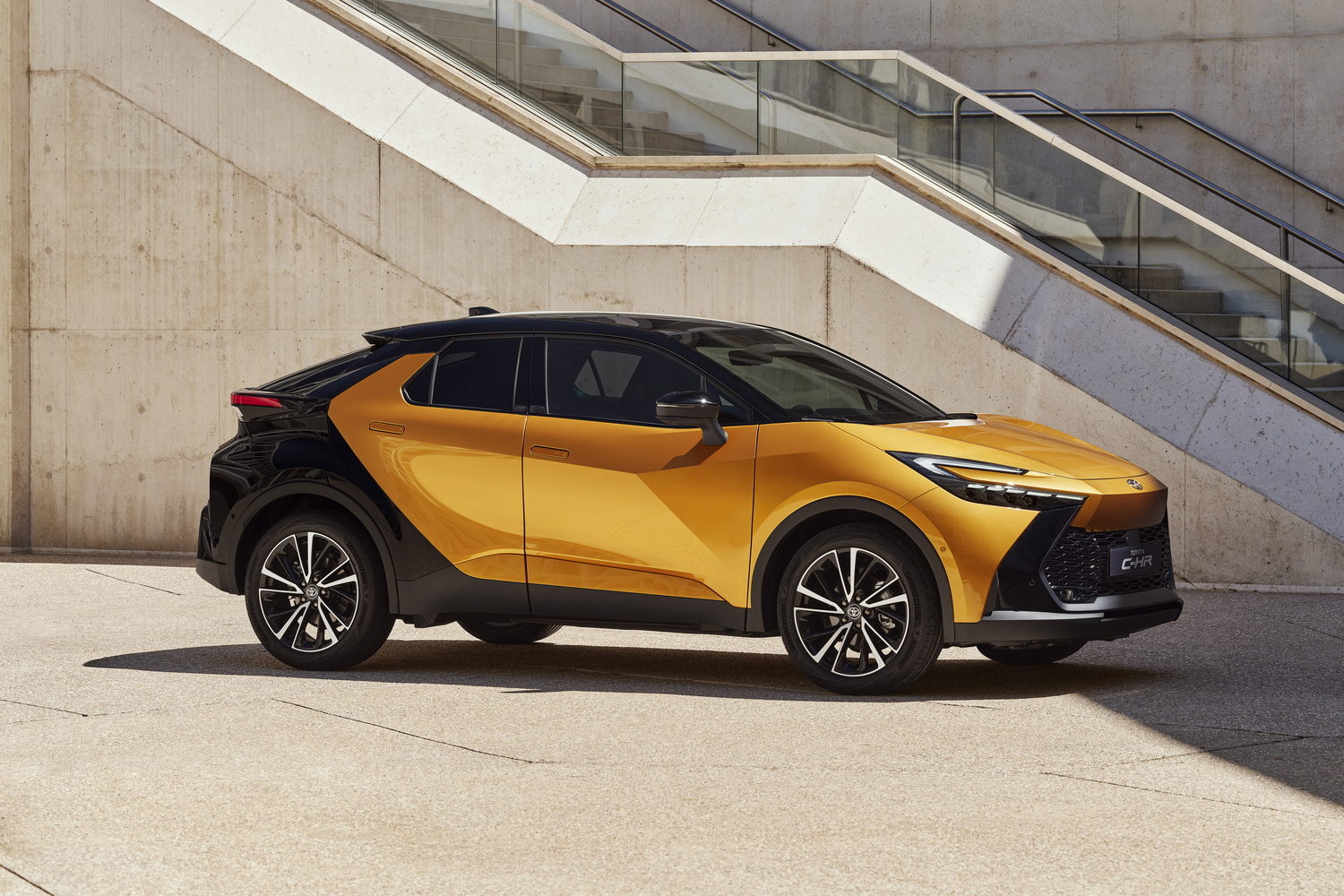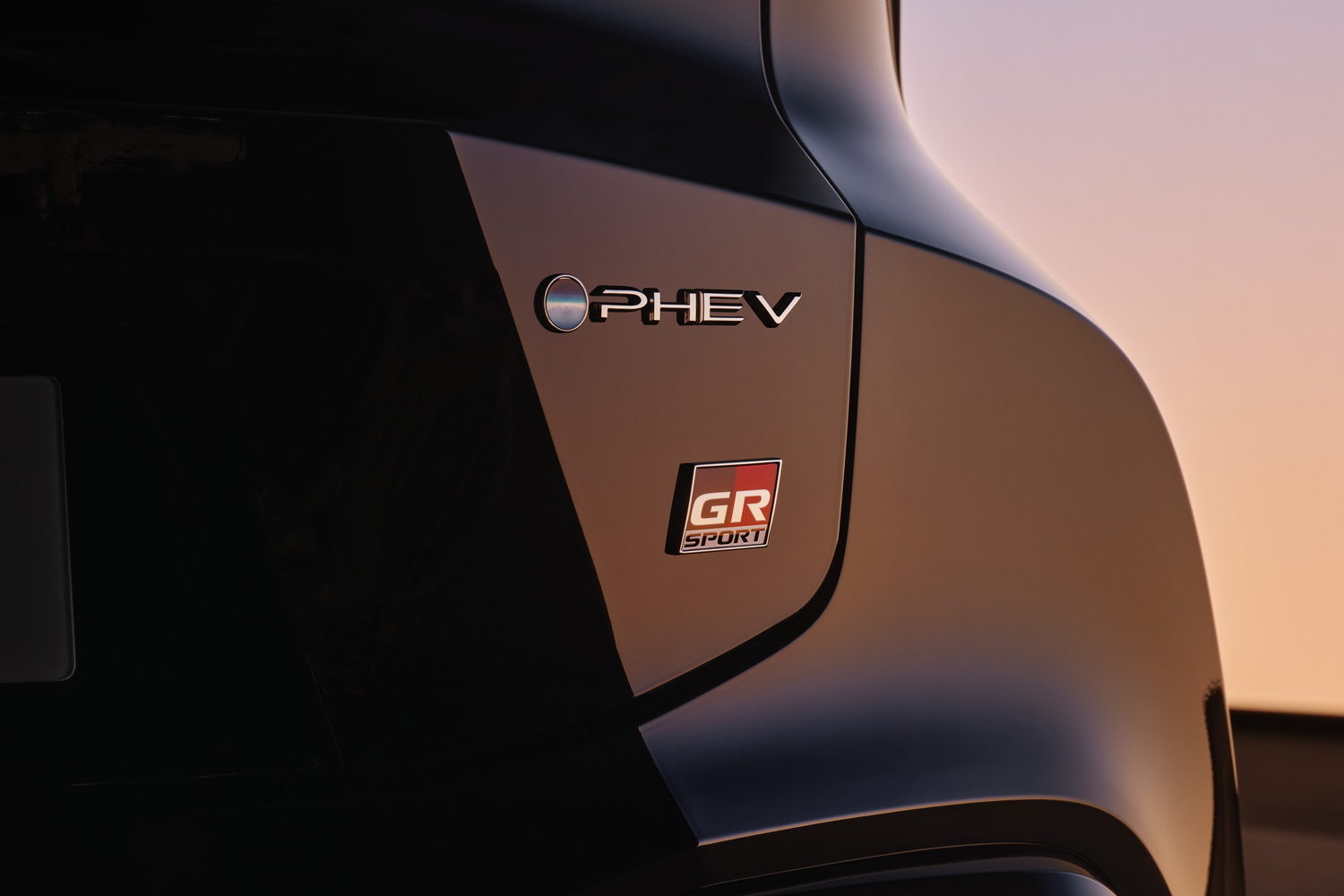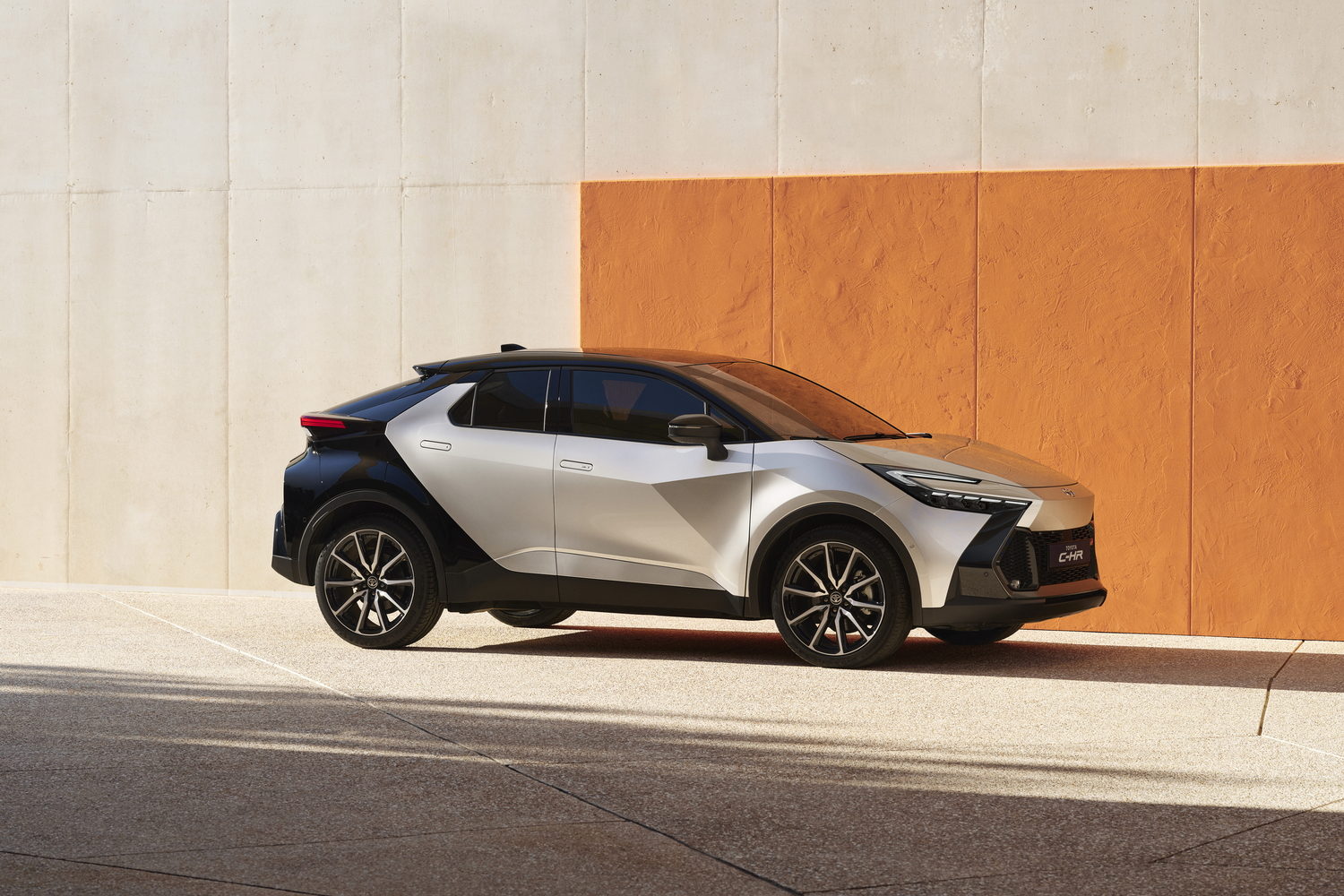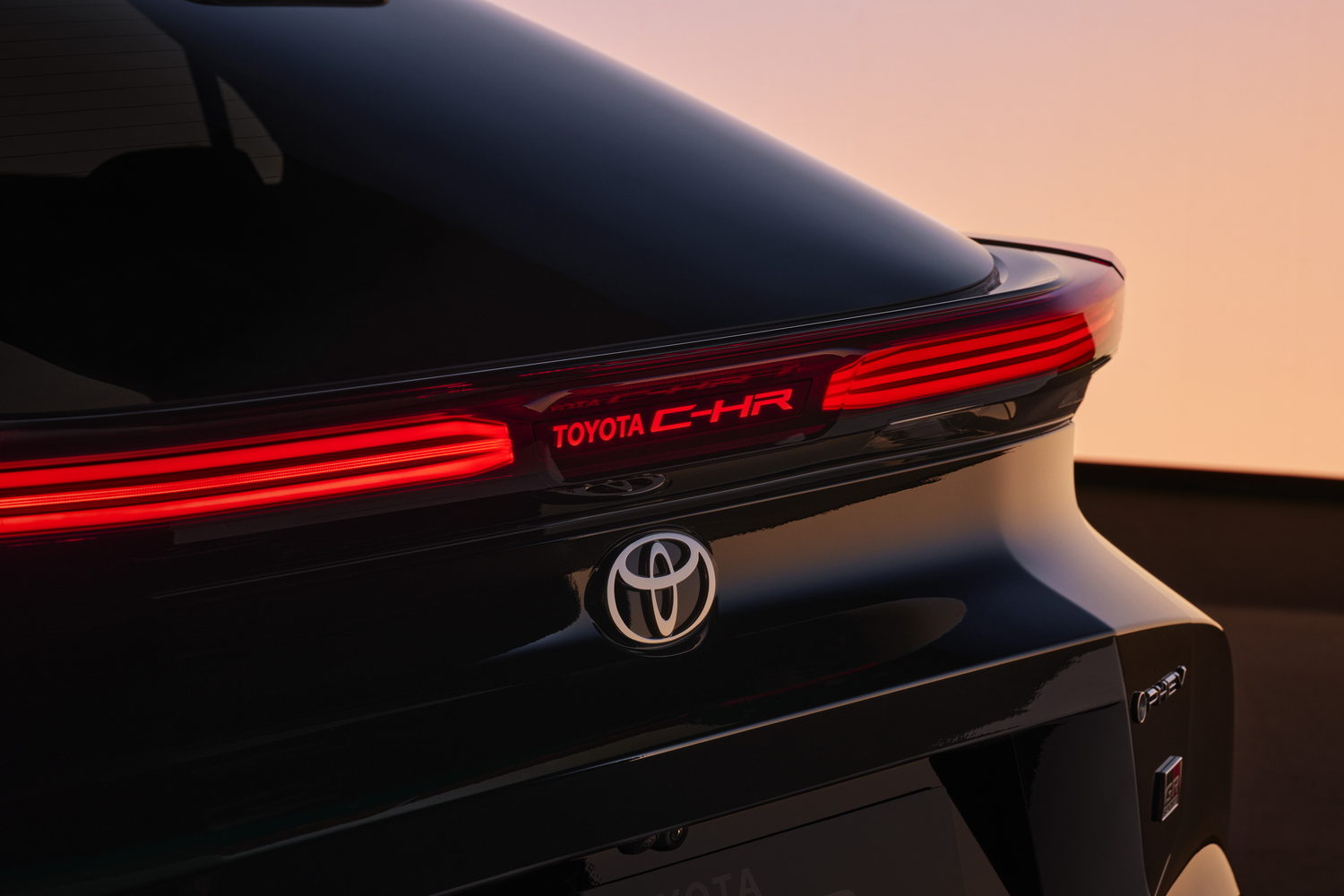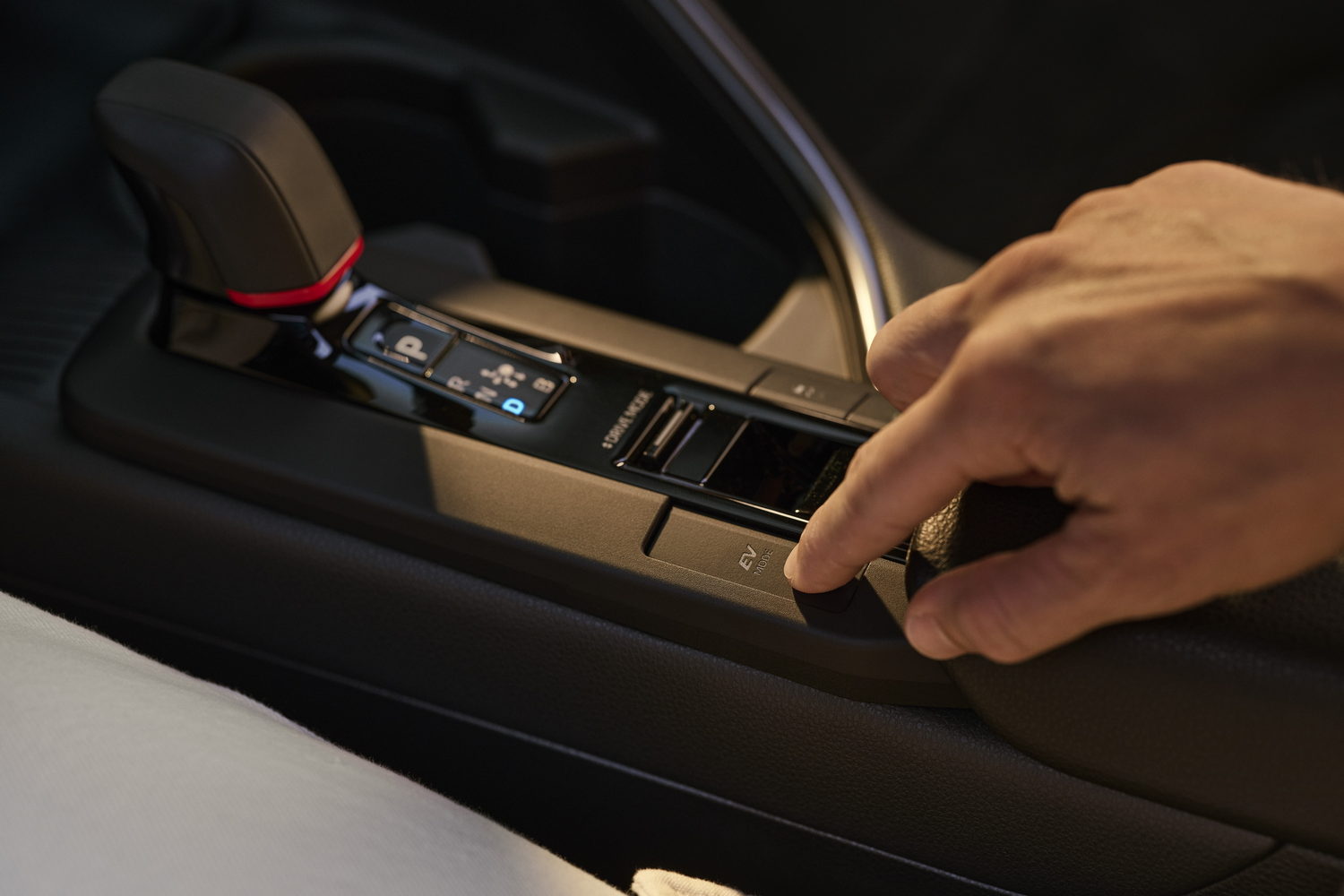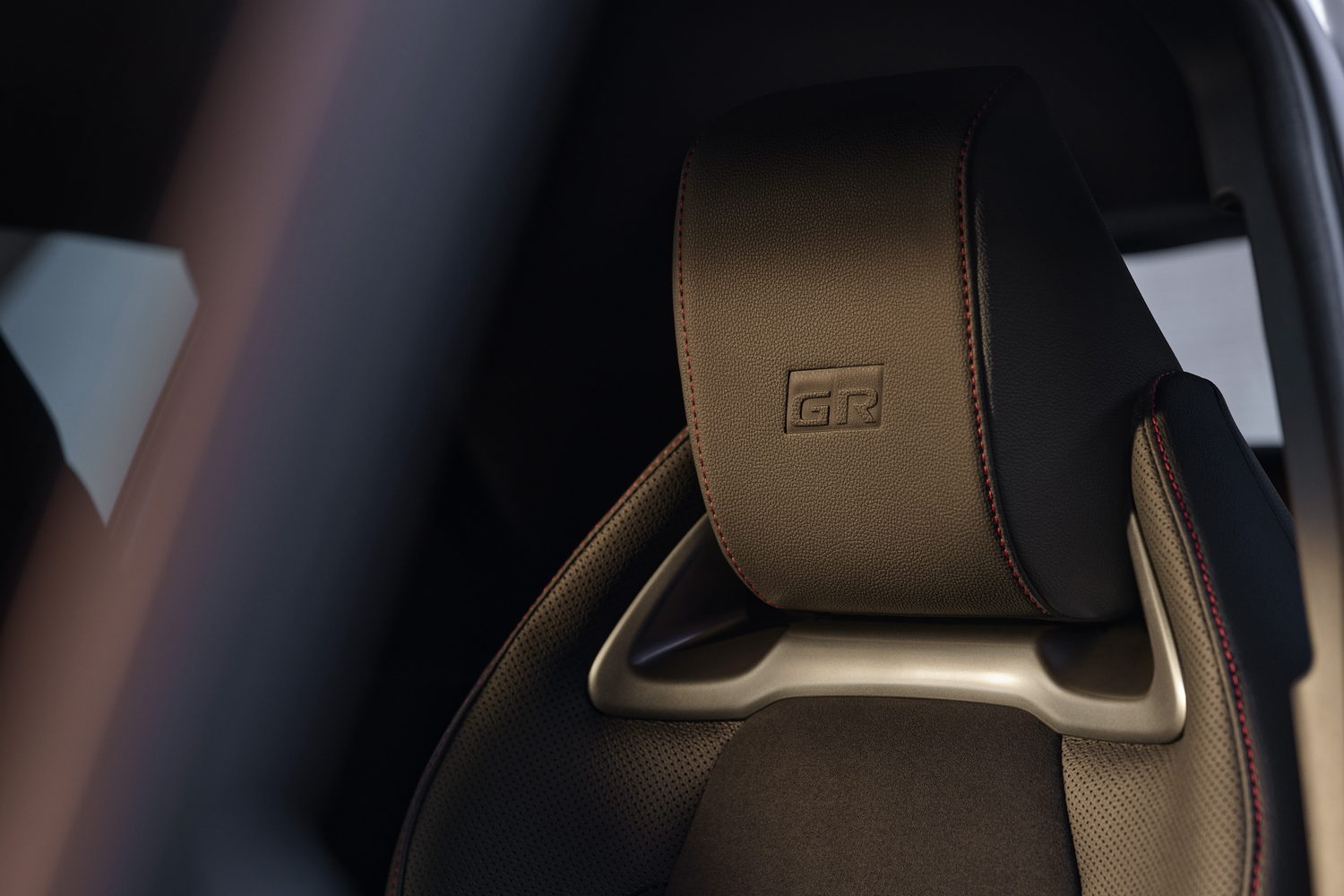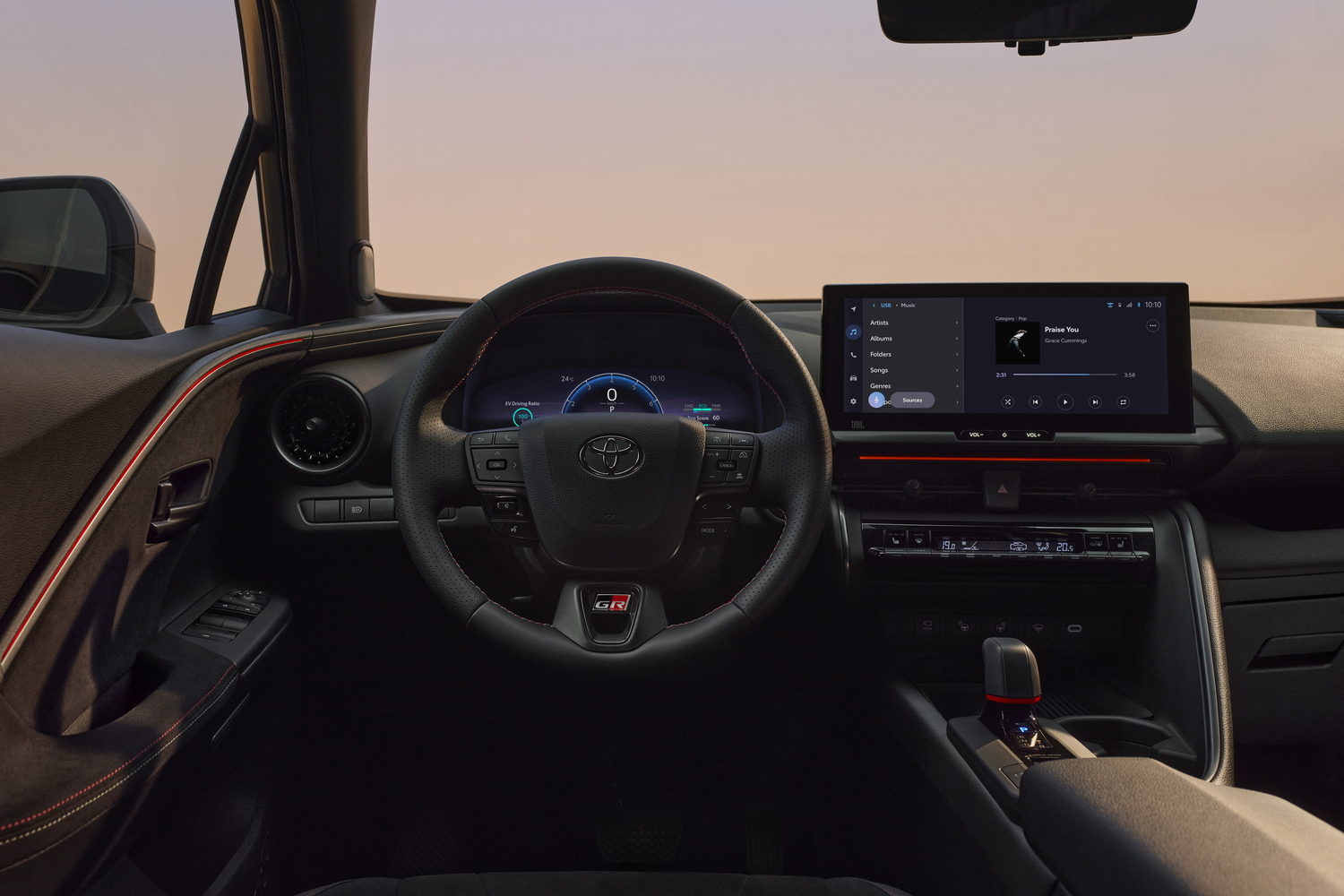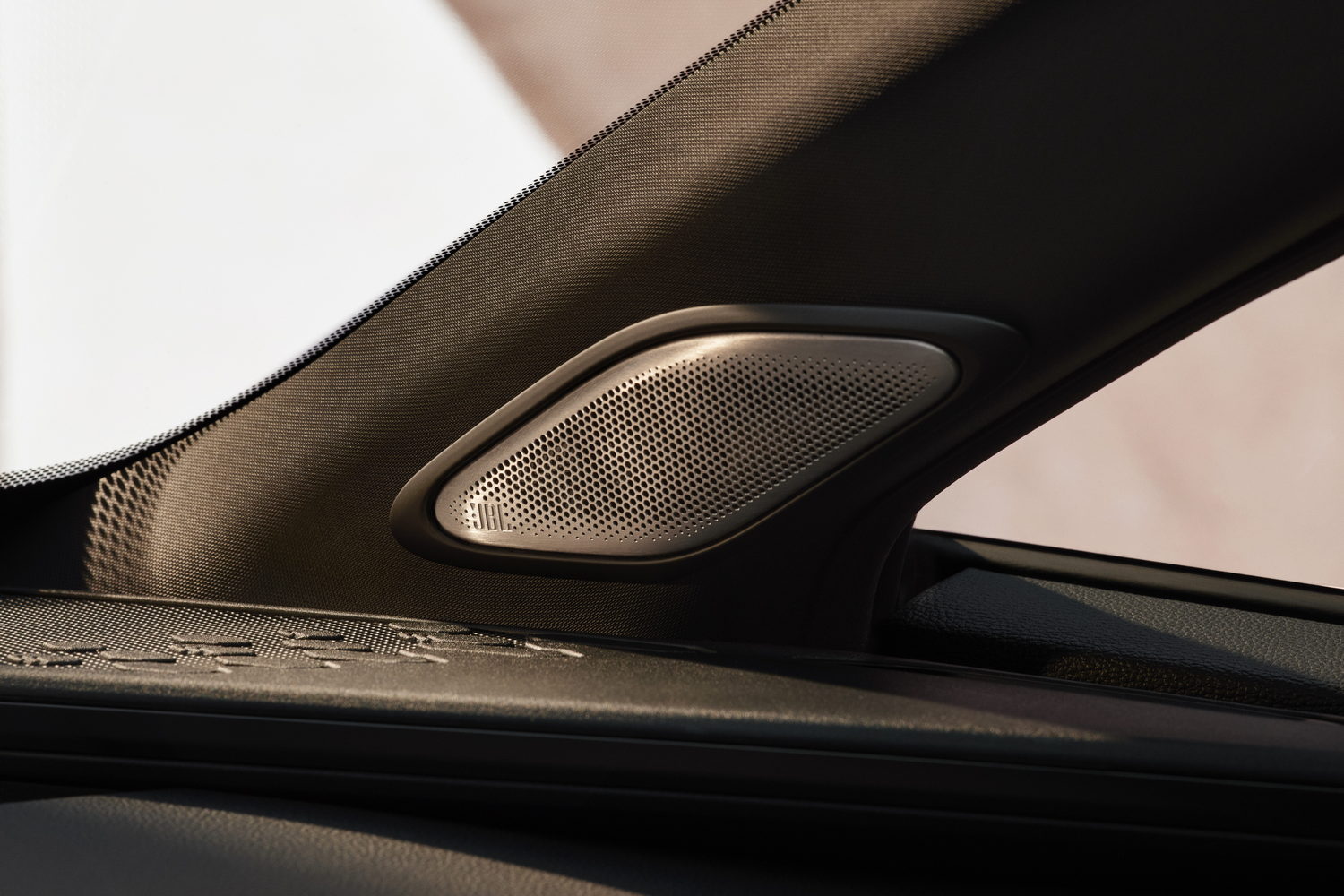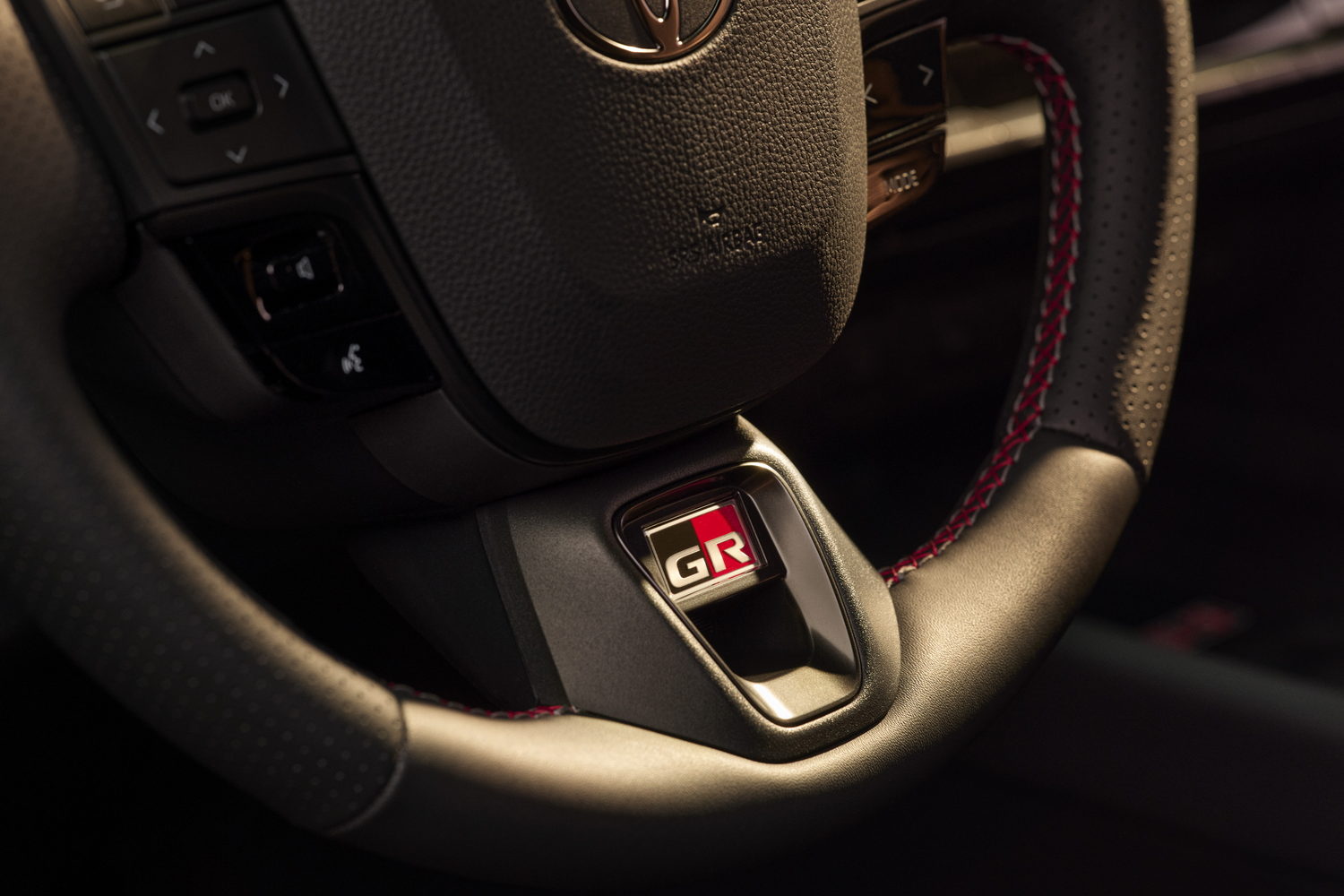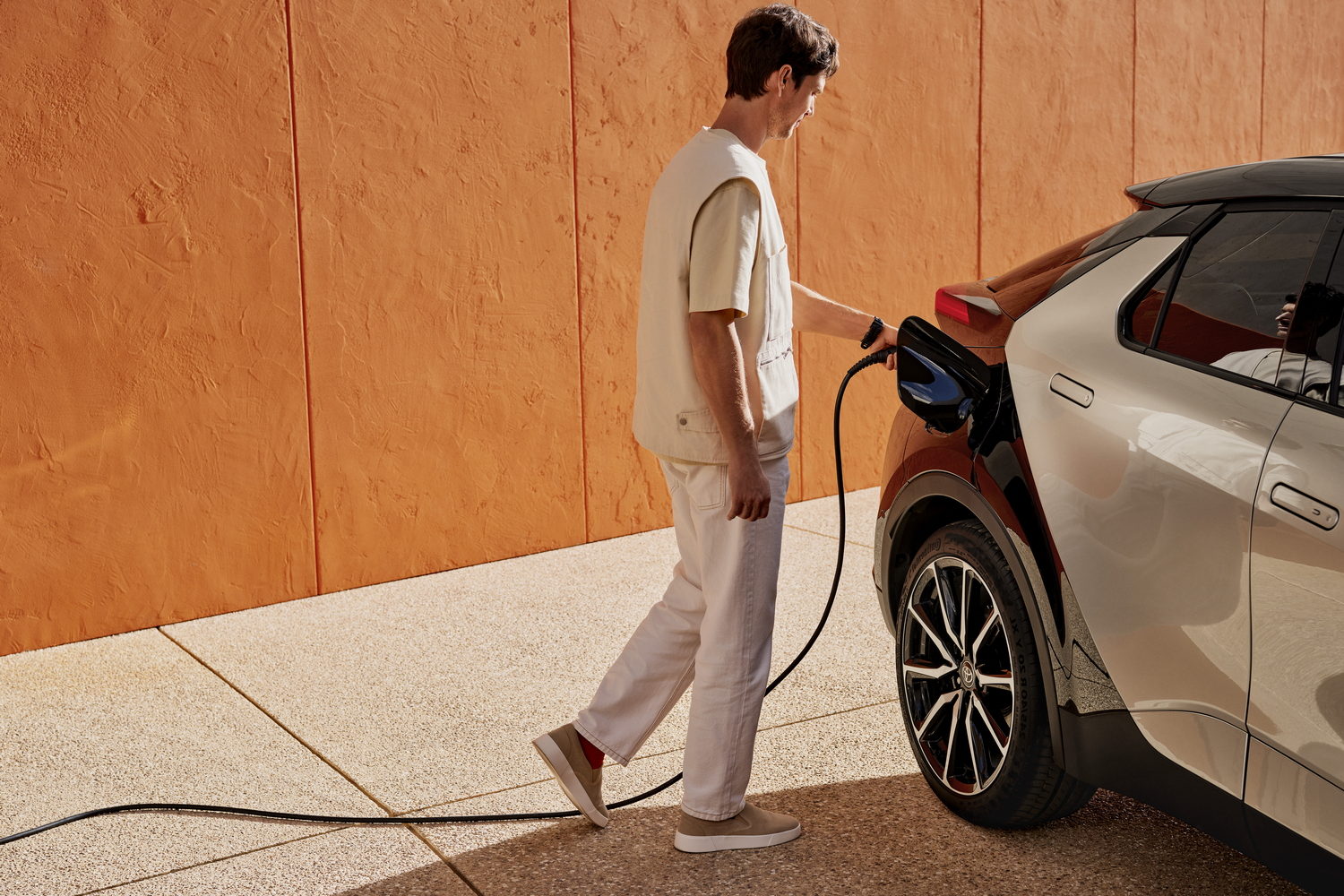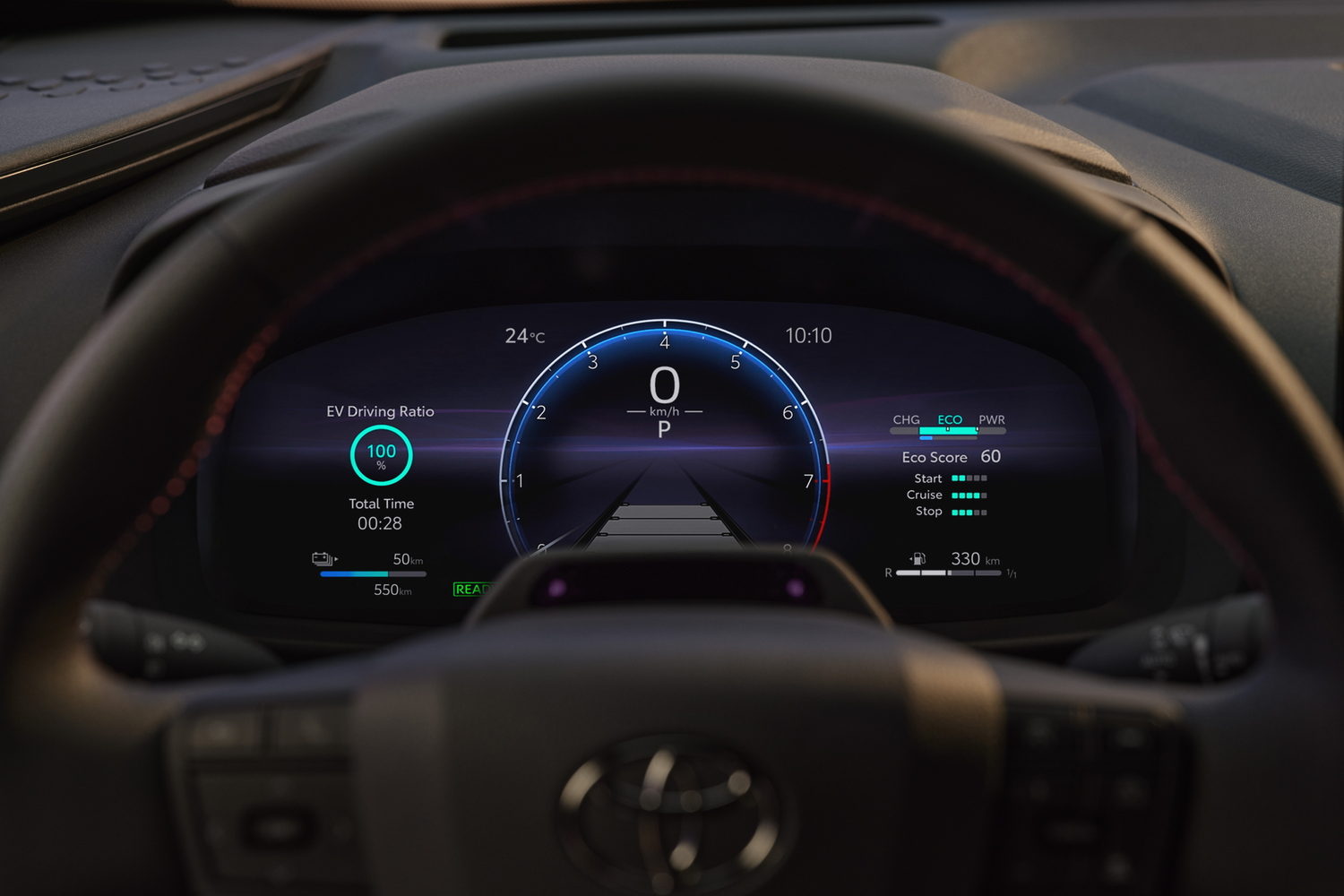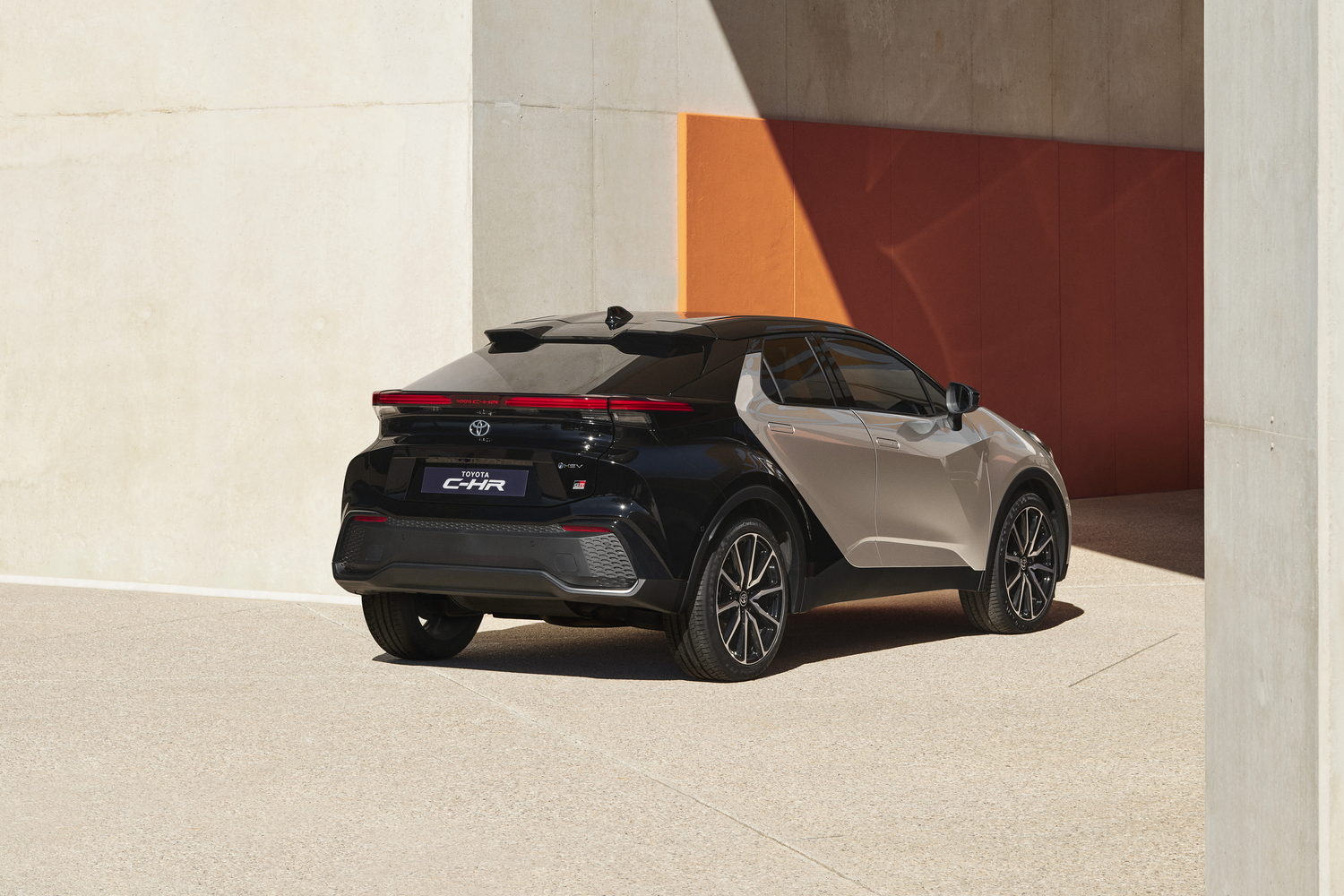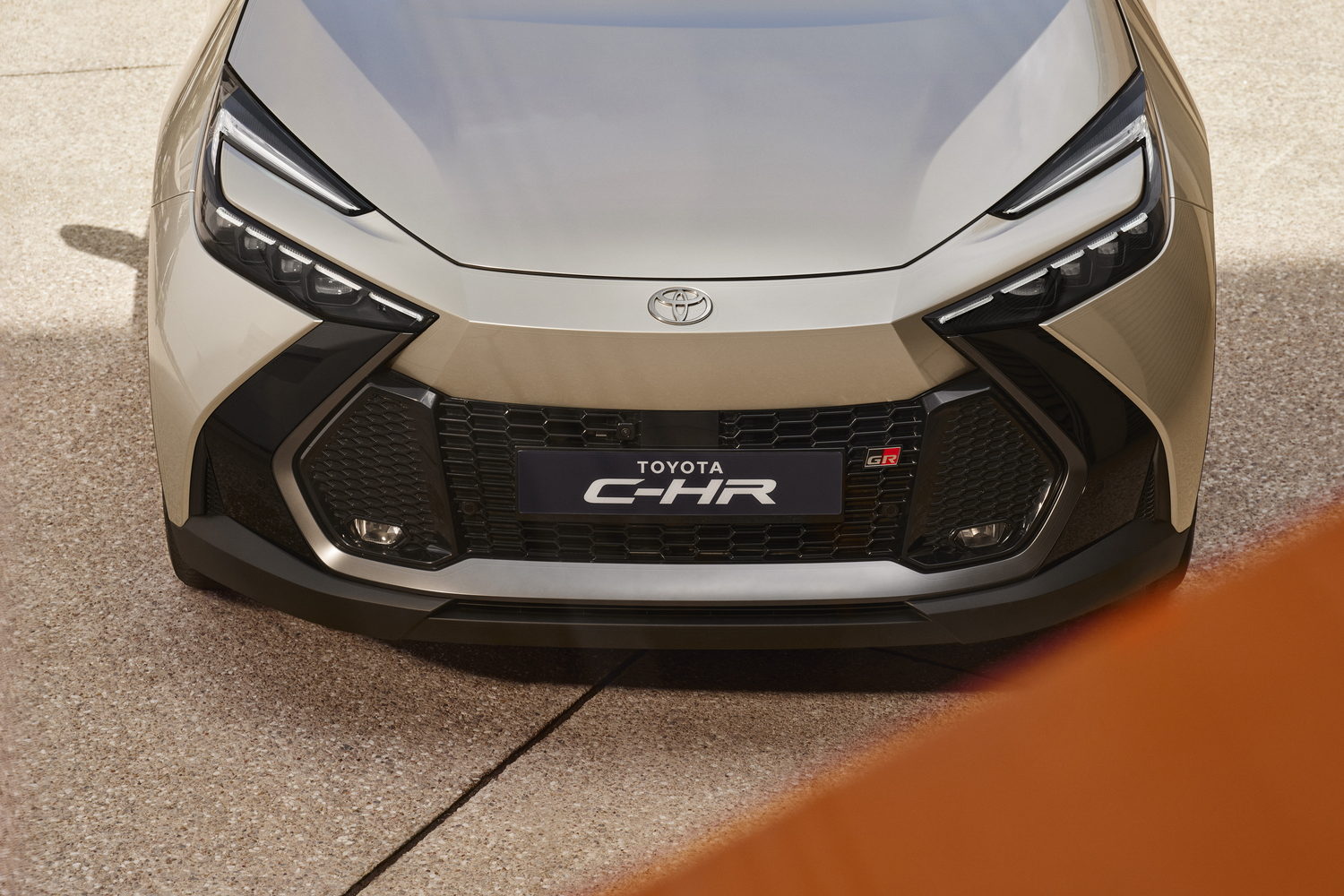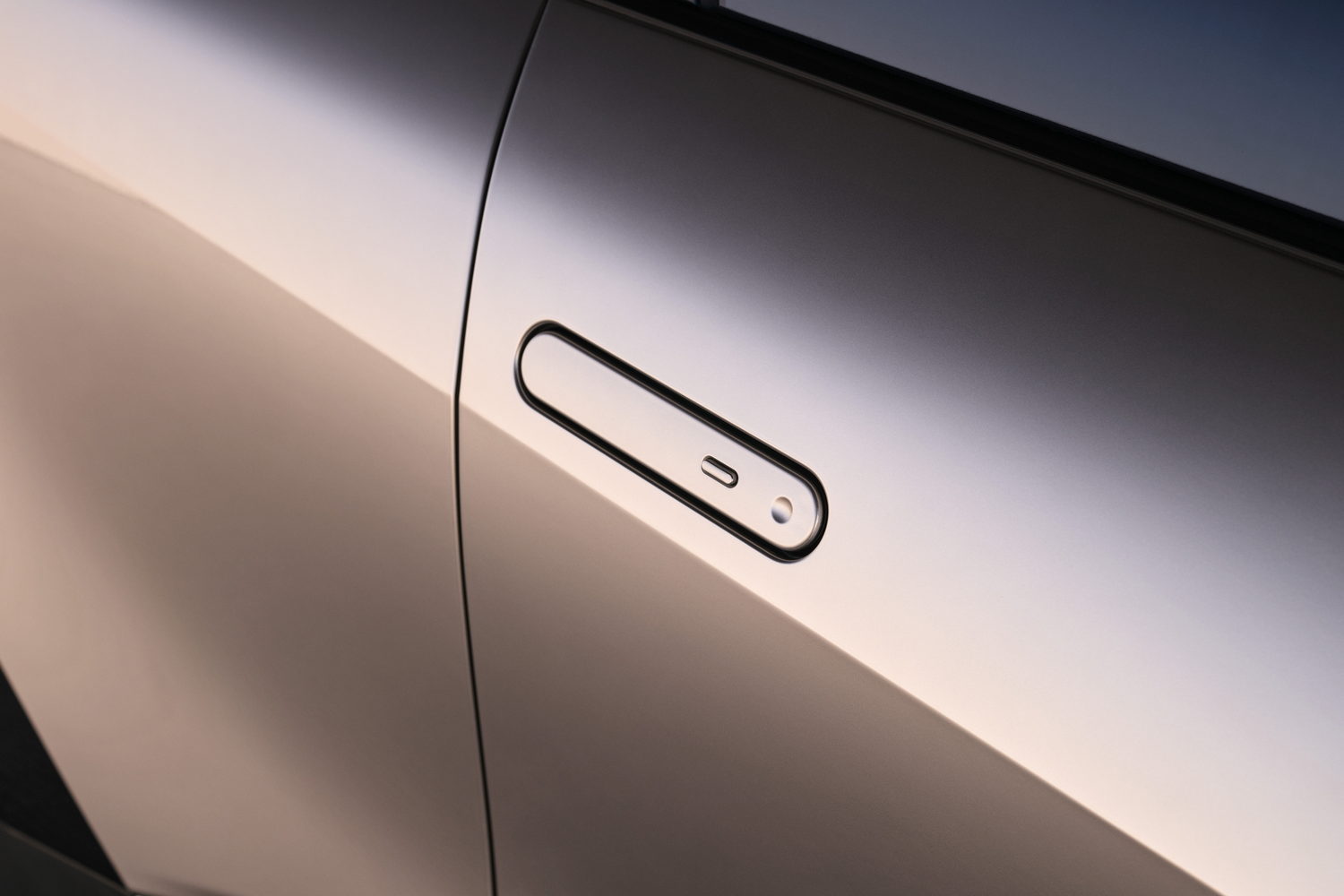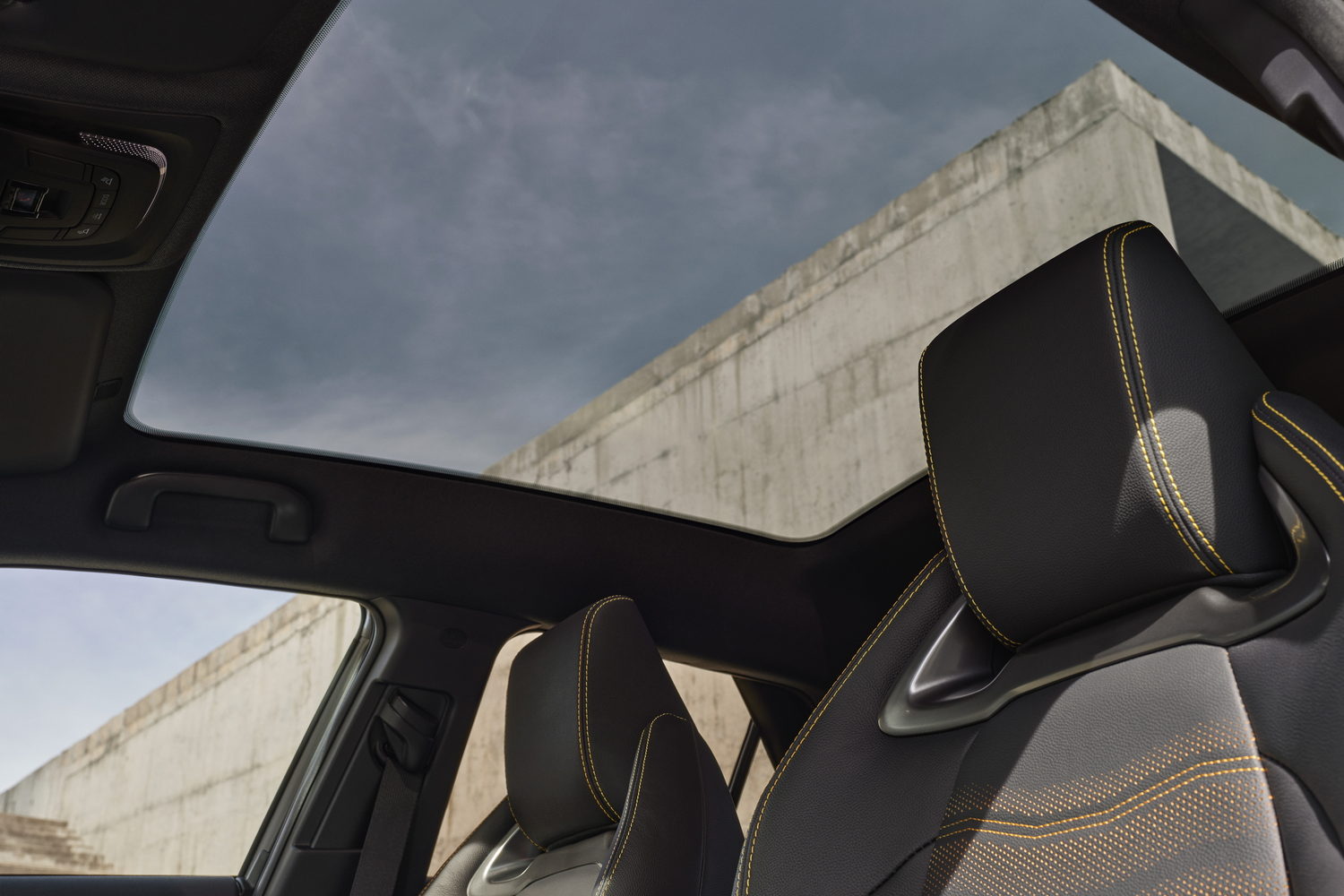The original Toyota C-HR brought more new customers to the brand than any other model before it and has been a key part of the company's success in Europe. Now there's an all-new generation of the 'Compact-High Rider' set to launch. It will feature more in-car tech and a plug-in hybrid variant.
Striking looks for the Toyota C-HR
Toyota's first C-HR was a daring design for the company when first launched, and the approach taken to creating this new model was to build on that and give the car even more visual impact. It has remained true to the C-HR Prologue concept car in that regard. While the new C-HR is slightly shorter than its predecessor, it has the same wheelbase as before.
Up front are C-shaped headlights that give the C-HR a distinctive appearance as it approaches. The base of the headlight links with the gloss black section that wraps around the lower bumper to frame the grille. Up to 20-inch alloy wheels are available, and the wheelarches feature a thin black surround. You'll find the most dramatic view of the C-HR from the side. Flush-fitting door handles pop out when the car is unlocked, and the front doors have a sharp triangular design in the sheet metal. Some solid body colours will be available, while the striking two-tone design is an evolution of the form language that debuted on the Toyota Aygo X.
The C-HR's angular rear design is partly dictated by aerodynamics, so much so that there is no rear window wiper. Instead, the airflow coming over the roof and through the spoiler is deemed enough to keep the rear view clear in wet weather. A light bar spans almost the full width of the rear, with the central section containing the Toyota C-HR logo, illuminating in red when the car is unlocked.
A re-imagined interior
Inside the Toyota C-HR is a new design that brings greater digitalisation and uses ambient lighting to improve the overall experience. Most versions will feature a 12.3-inch digital instrument display with easy-to-read graphics. Supplementing this unit is a head-up display that projects all of the essential information into the direct sight of the driver. On the centre stack will be either an 8.0-inch or 12.3-inch (depending on specification grade) touchscreen infotainment system. Both wireless Apple CarPlay and Android Auto will be available, as will a wireless charging pad for compatible devices. Toyota's sensible approach to cabin ergonomics means there are still physical buttons and controls for the most frequently used functions, such as adjusting the interior temperature and clearing windows.
Thin illumination strips of ambient light run across the dashboard fascia and follow the sloping design into the doors. These can be tailored to individual preferences, with 64 colours available. The ambient lighting also has a function, such as alerting occupants when opening the door if the sensors detect approaching cyclists or pedestrians, for example. Toyota's engineers have even created a shifting colour display that adjusts during the day to provide a suitable colour as time progresses. In the case of the plug-in hybrid, it can also show the car's charging status and adjust if it reaches a geofenced low-emission zone.
Natural light can still flood into the cabin thanks to the fixed panoramic glass roof. The low-emissive and infrared-reducing coatings eliminate the need for a separate sunshade blind, thus saving 5kg in weight and improving passenger headroom by 30mm. The coatings also help it to retain heat in cooler weather and reflect sunlight on warmer days to help balance the cabin temperature. Rear passenger space in general has improved and there is more of an airy feel inside.
New hybrid powertrains for the C-HR
Toyota will offer a plug-in hybrid version for the first time in the C-HR. As in the new plug-in hybrid Prius, a 2.0-litre petrol engine is paired with a 13.8kWh lithium-ion battery that can provide 66 kilometres of pure electric driving range and can fully recharge in 2.5 hours via a 7kW AC charger. It will be the most powerful version of the C-HR, with a maximum power output of 223hp and CO2 emissions of 19g/km on the WLTP cycle. A heat pump will help to improve the car's efficiency further.
There will be regular hybrid versions of the C-HR, too. The range will start with a 1.8-litre version and a 70kW electric motor to provide a total output of 140hp. That marks an increase in performance over the previous 1.8-litre hybrid while reducing CO2 emissions. Alongside the 1.8 Hybrid, Toyota will offer a 2.0-litre version with a power output of 198hp while still matching the combined fuel consumption of the 1.8 Hybrid at 4.8-5.0 litres/100km. There is only a slight increase in CO2 output to 107g/km, meaning that presently both cars would remain in the same €180 per annum motor tax band in Ireland.
Other markers will offer the 2.0-litre hybrid system paired with an additional electric motor on the rear axle to create an all-wheel-drive transmission that Toyota calls AWD-i. The system provides added traction when pulling away and driving on slippery surfaces, but is not expected to be offered in Ireland.
Toyota has worked on improving the performance of its powertrains to provide "a more direct relationship between use of the throttle and the vehicle's response," with a desire to make the C-HR more fun to drive. Under the skin, the suspension, steering and brakes have come in for a redesign and have been retuned to enhance the car's poise and ride comfort.
The new Toyota C-HR will be launched in Ireland later this year, with Irish pricing set to be confirmed closer to that time.

